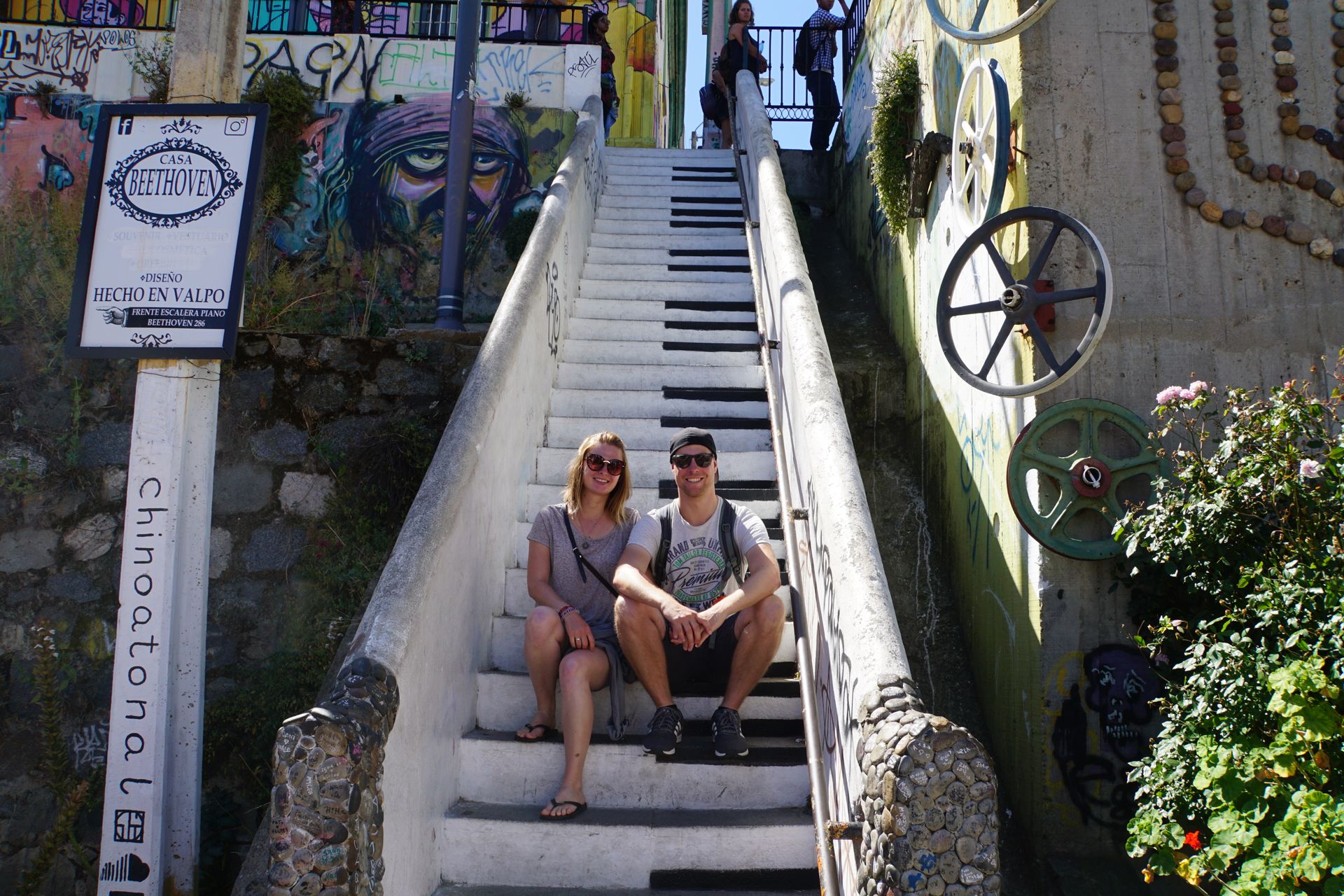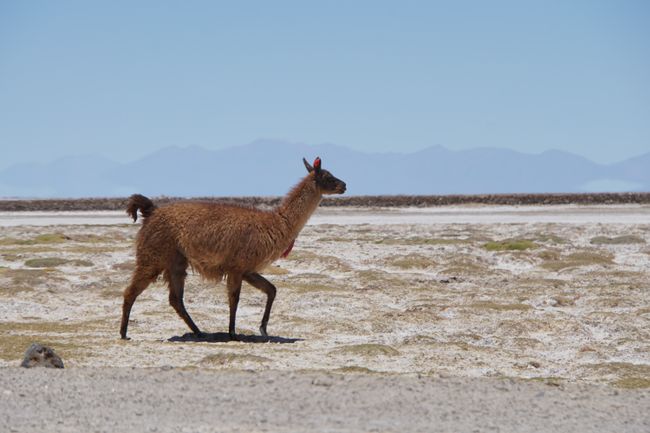Our tour through the Mekong Delta
Publicado: 12.04.2019
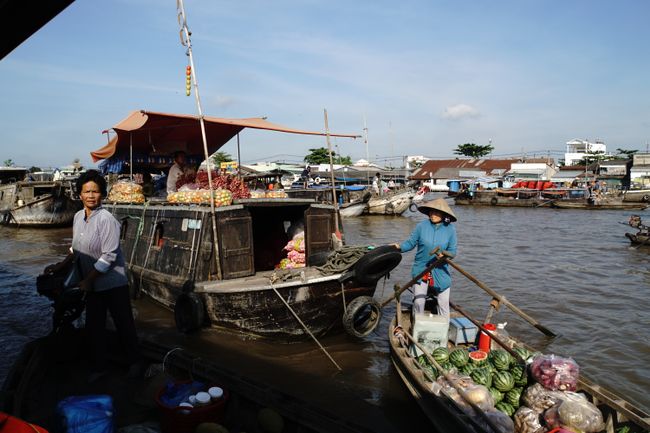
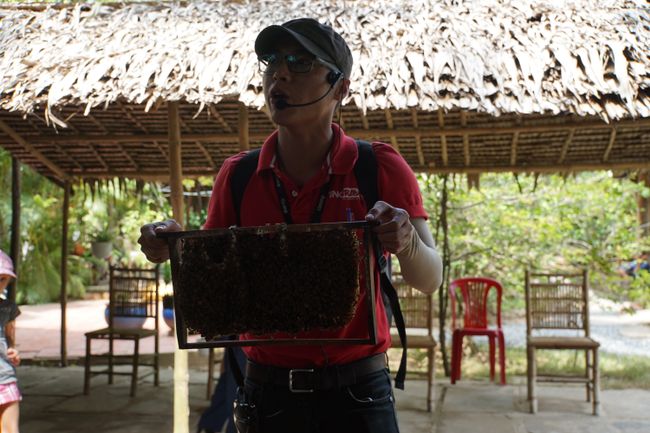
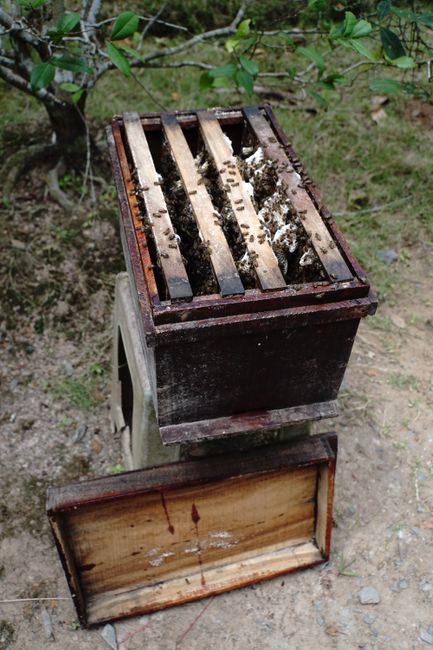
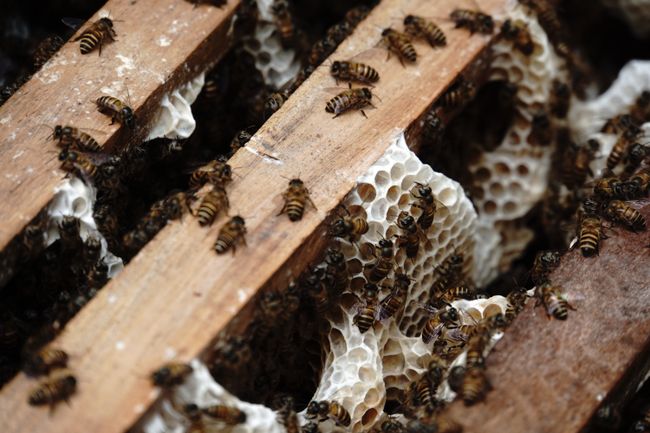
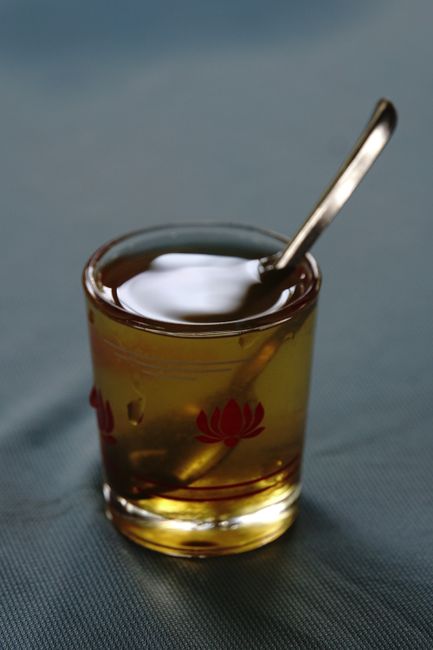
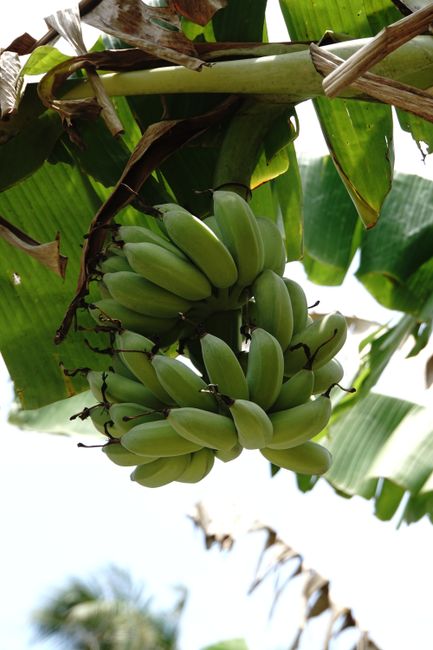
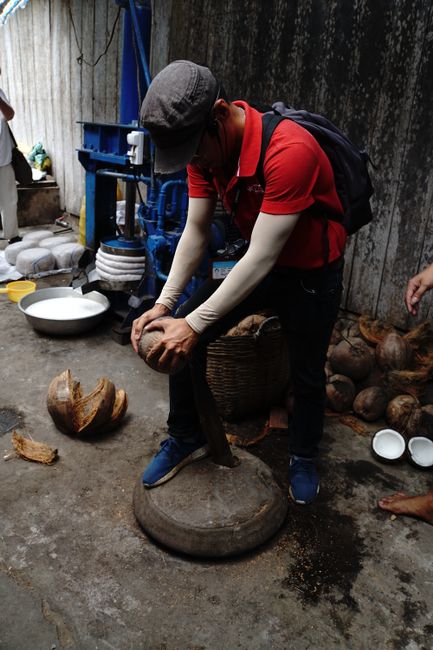
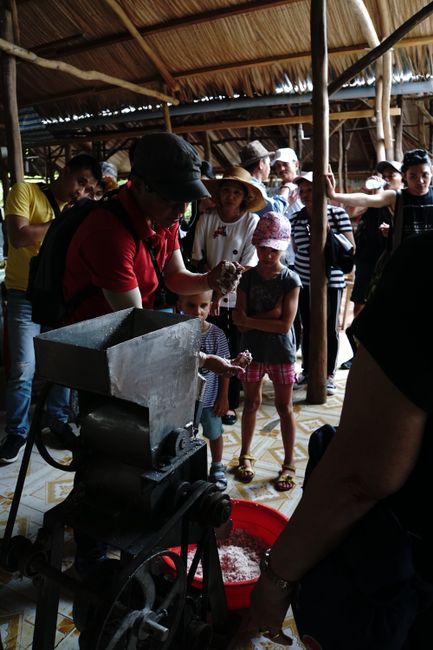
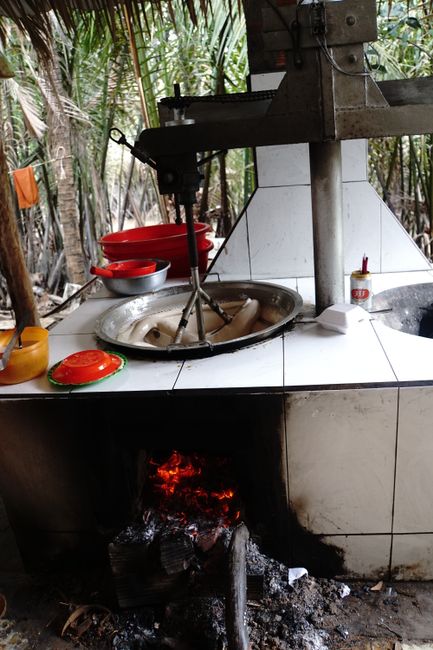
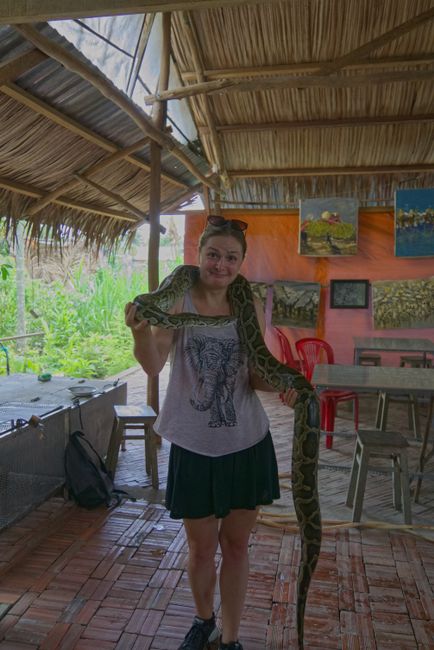
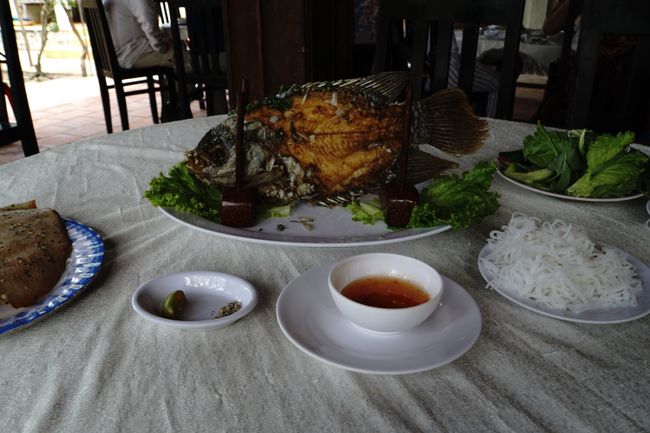
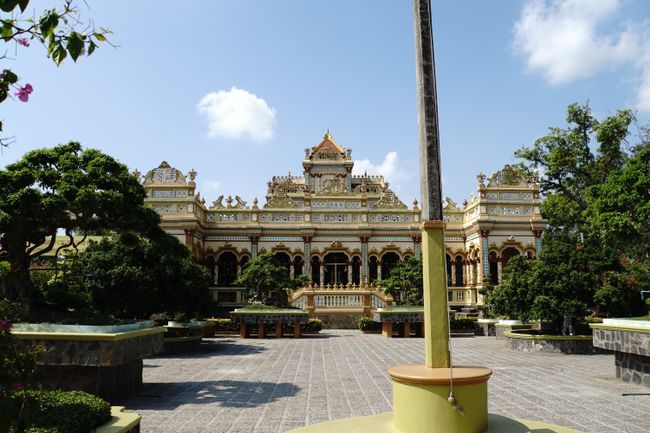
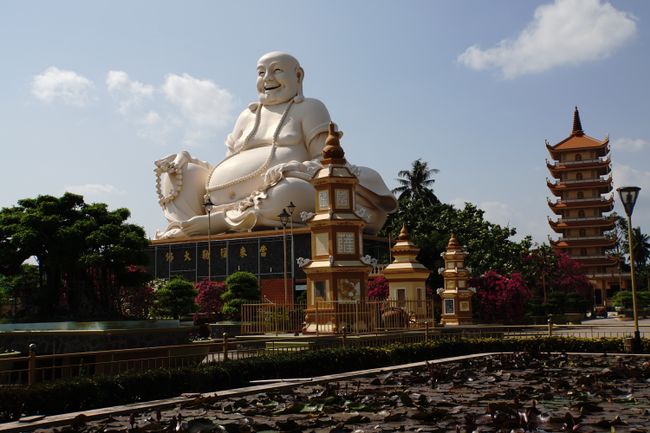
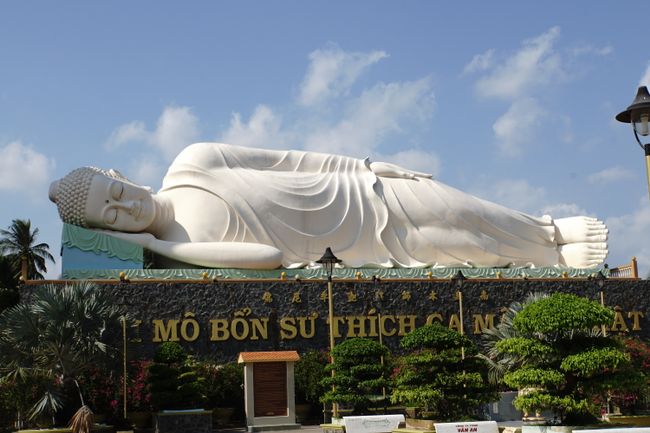
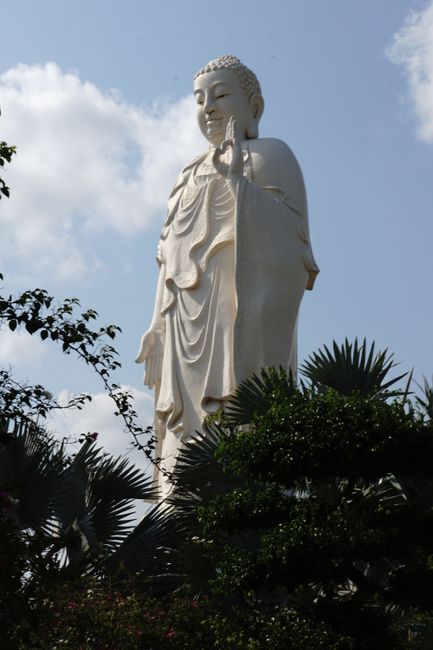
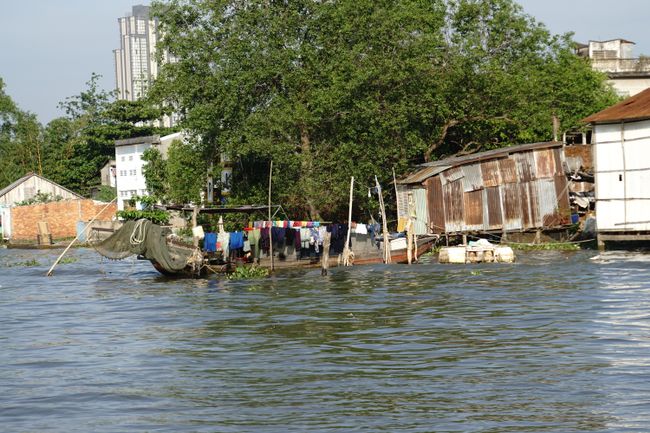
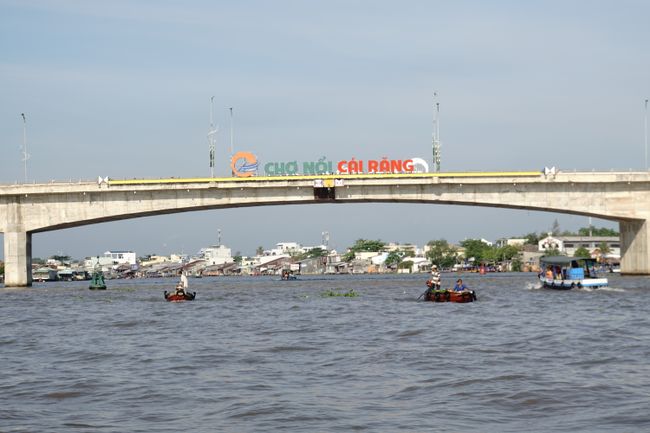
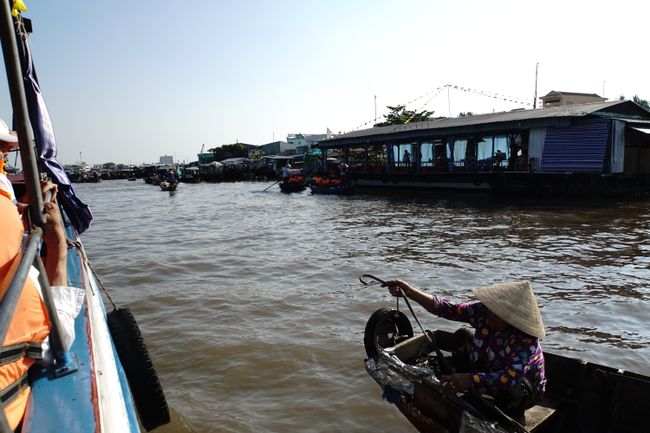
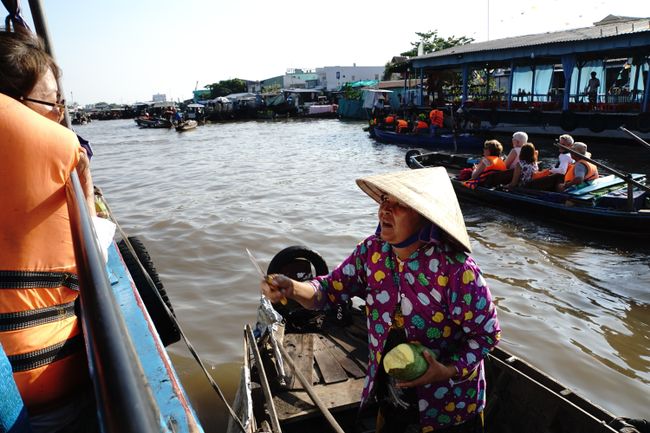
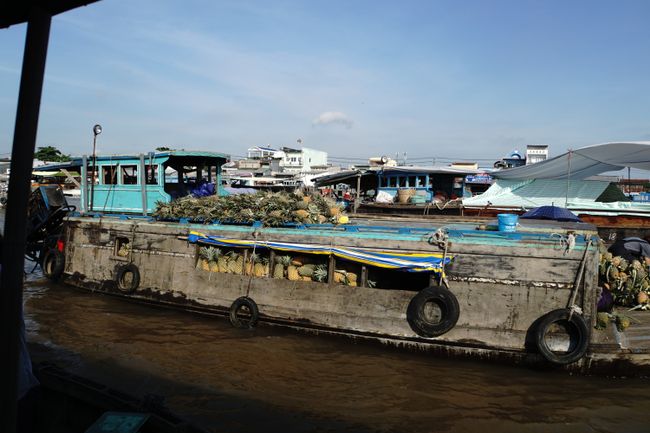
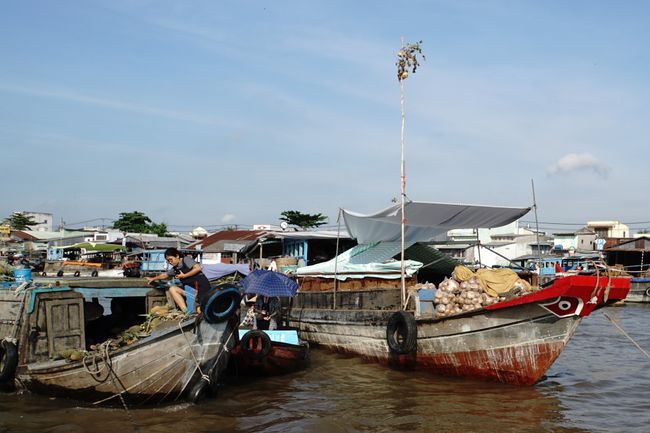
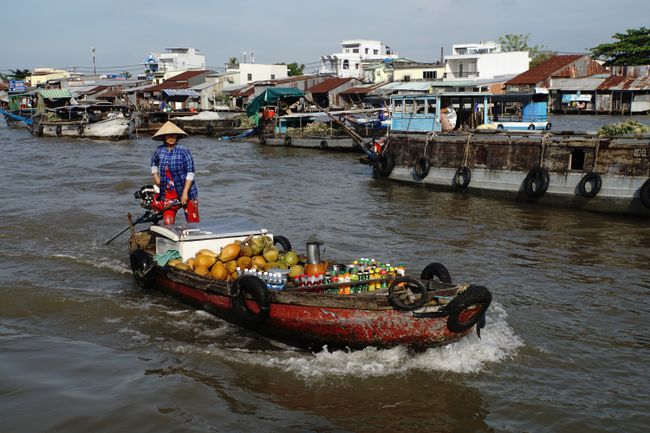
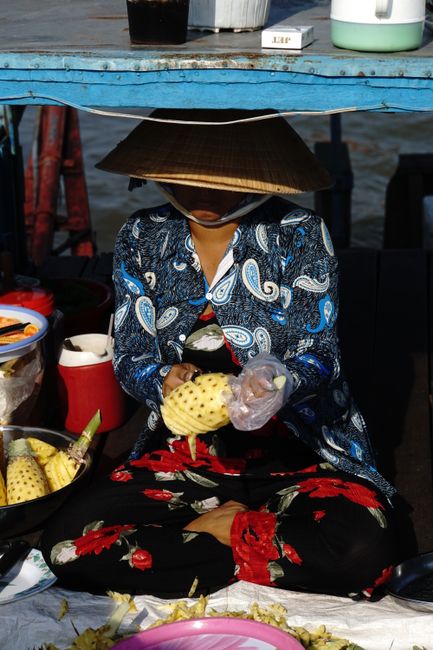
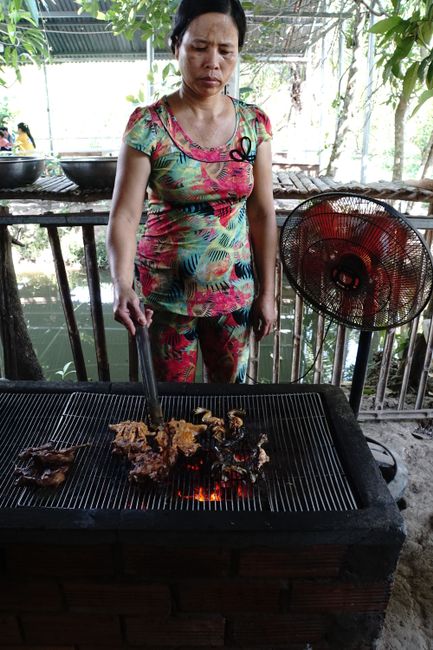
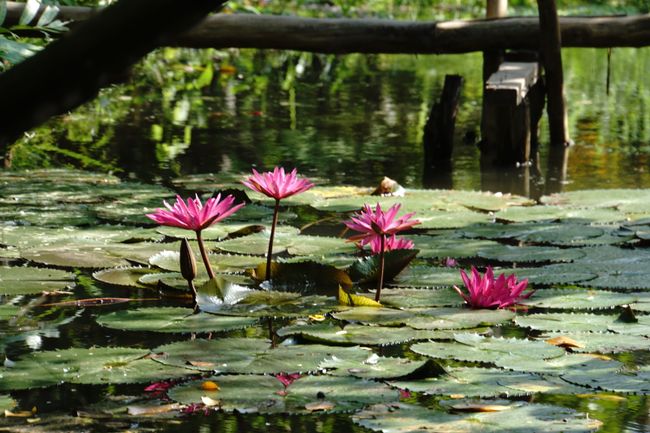
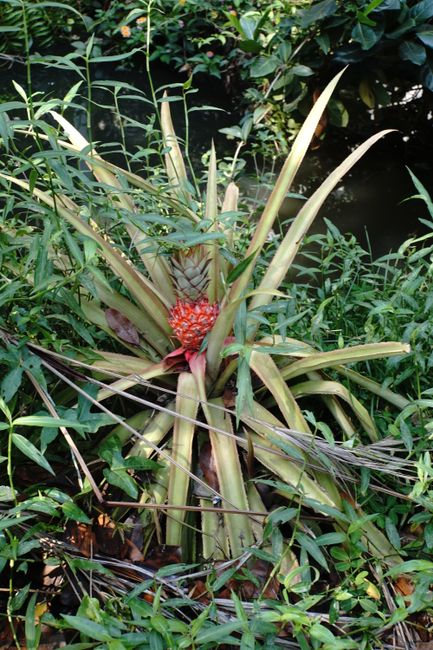
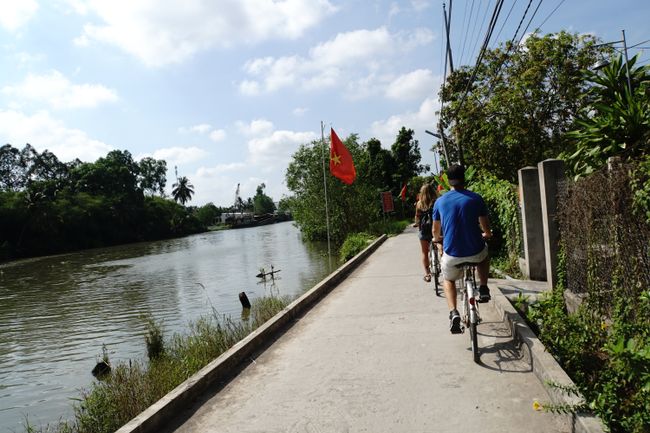
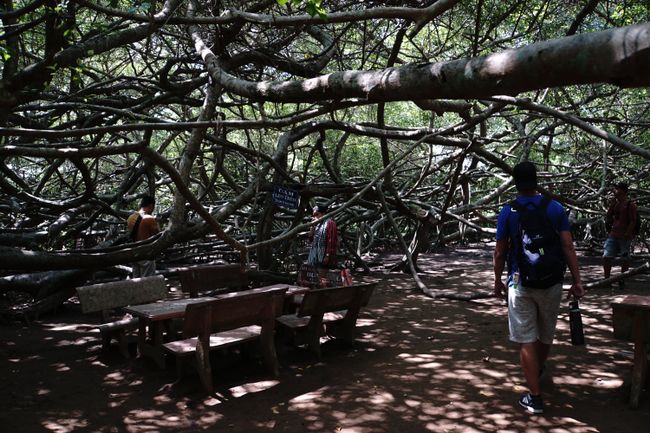
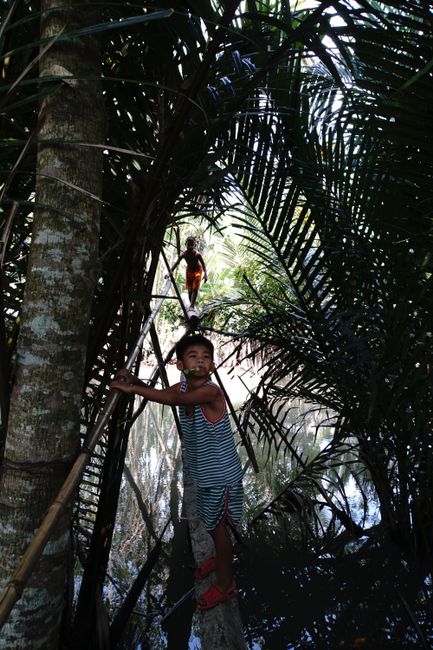
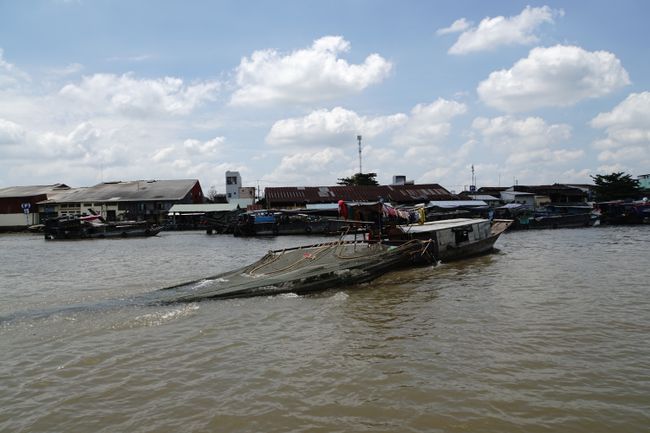
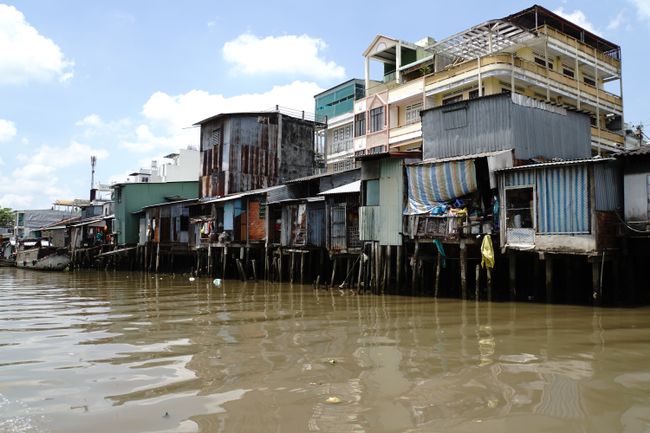
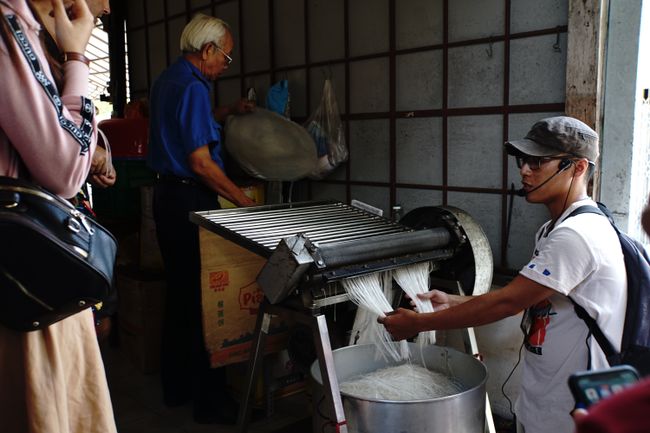
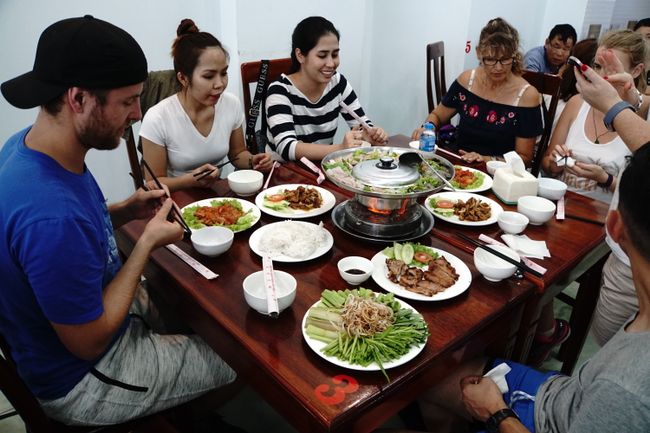
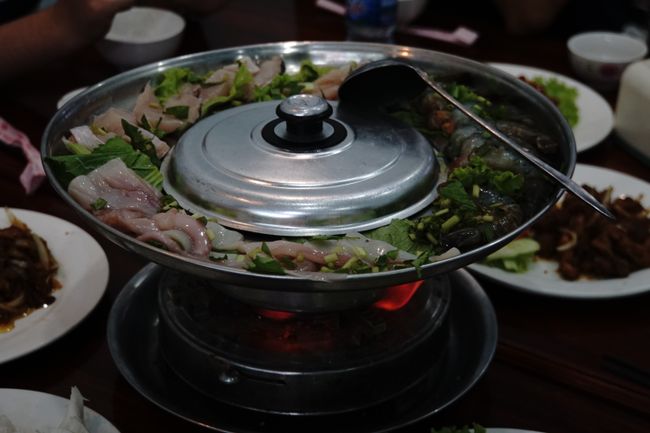
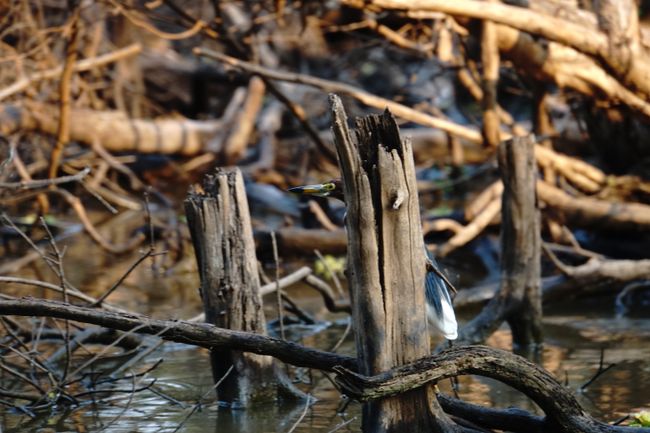
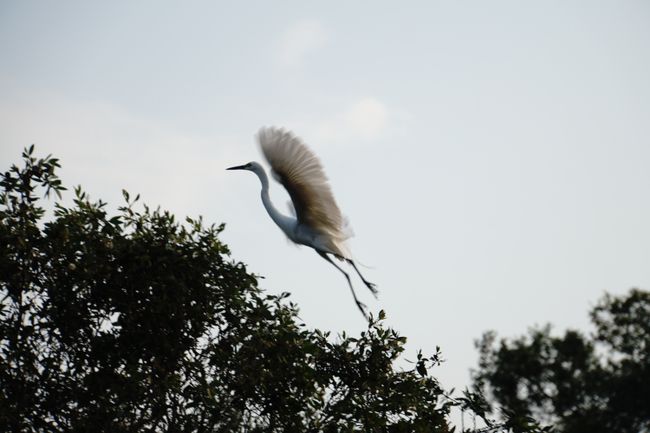
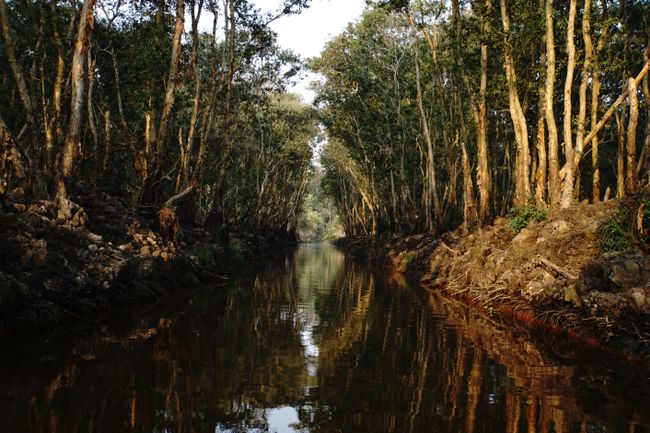
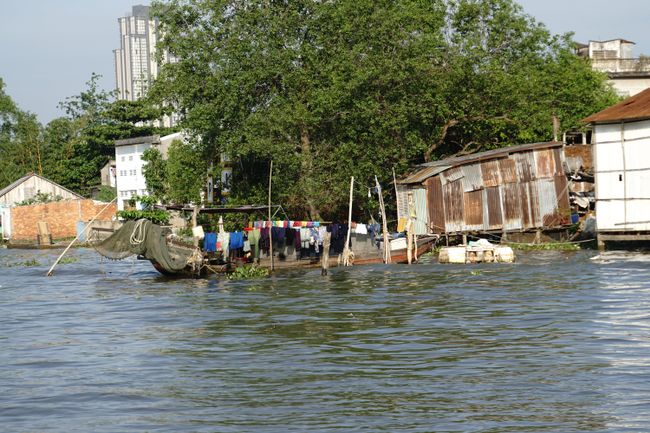
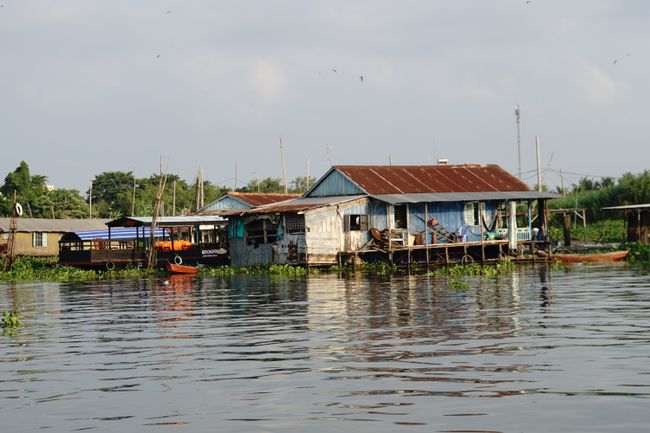
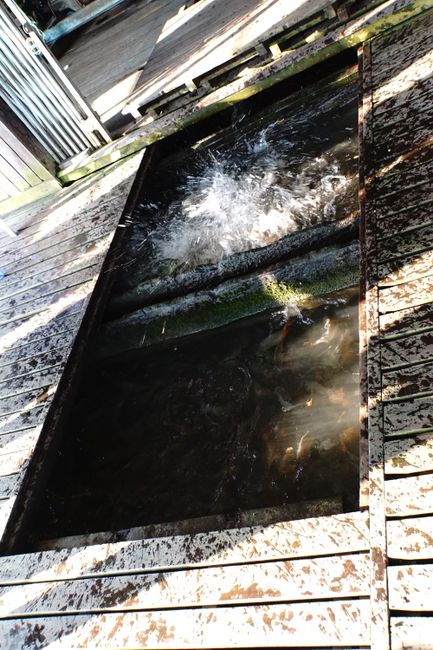
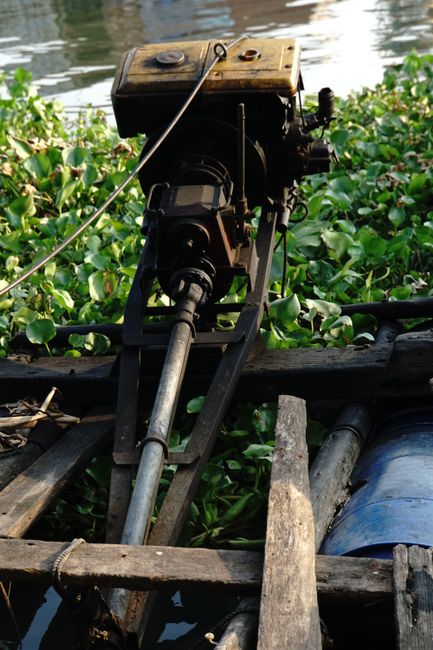
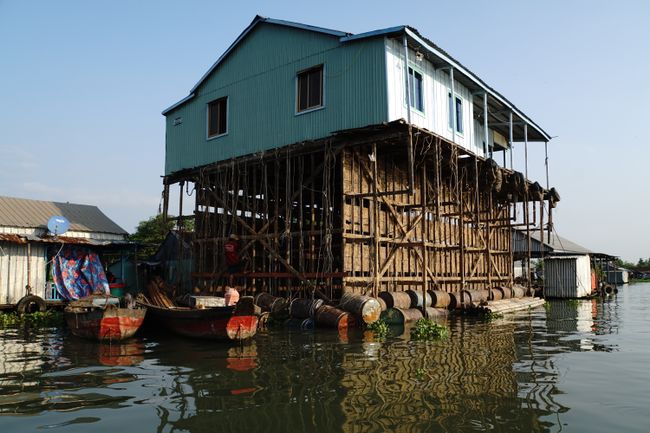
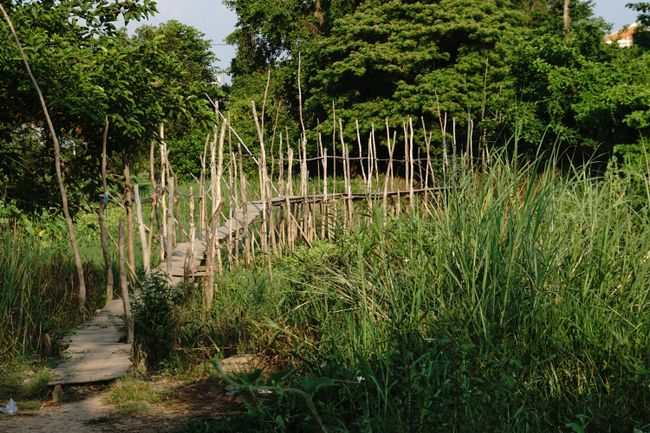
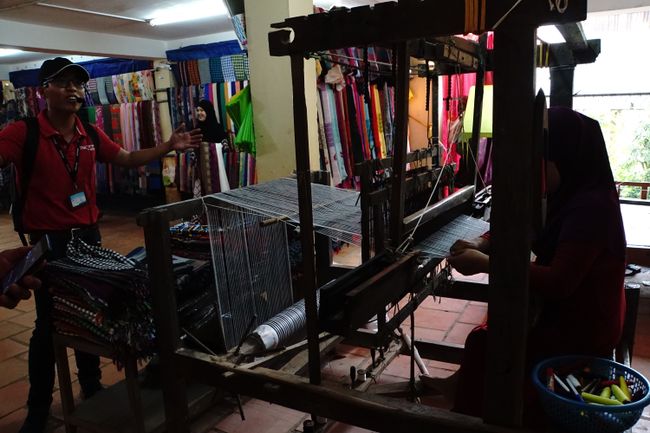
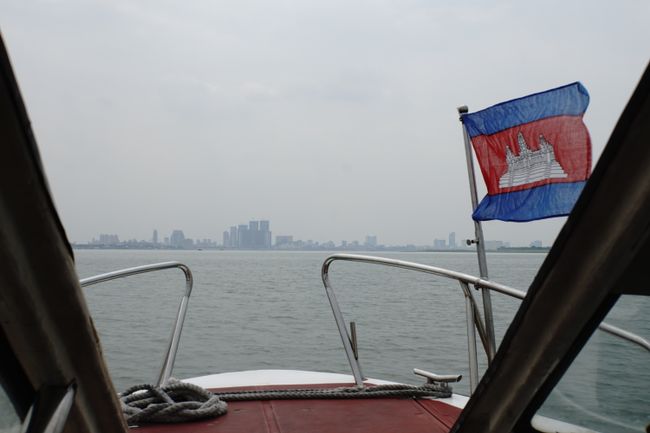
Subscríbete ao Newsletter
The last country we will visit on our world trip is Cambodia. From Ho Chi Minh City you can easily cross the border, you can reach Cambodia's capital by plane or direct bus in 1-6 hours. Alternatively, you can also travel through the Mekong Delta and enter Vietnam's neighboring country by ferry or speedboat. During the tour, you can also admire the famous floating markets and the beautiful and unique river landscape of the Mekong Delta. It's not really a difficult decision for us, after all, we still have 10 days before our flight back to Germany (unbelievable how quickly time has flown by!).
Our three-day tour through the Mekong Delta starts in Ho Chi Minh City at 8 a.m. We were able to rearrange everything the day before. Originally, we had booked a two-day tour with The Sinh Tourist. We already knew the agency from our bus trips in Northern Vietnam and had been very satisfied. Unfortunately, two days after our booking we received an email saying that they couldn't gather eight participants and therefore the tour would not start. Annoying at first, but thanks to Tripadvisor we are standing in front of the TNK Travels agency an hour later, which books us easily for the next morning in their Mekong tour. Now we are sitting in a big bus with 43 participants, but we have three instead of two days and much more program. It's a stroke of luck in misfortune so to speak.
As we roll through Ho Chi Minh City in our wonderfully air-conditioned coach, our guide Khoa (he calls himself 'Agent K', in reference to Men in Black) tells us all sorts of fun facts about the city and explains the program for the next few days. He speaks excellent English and we find him very likable right away. So we drive relaxed for almost two hours until we stop near An Khang to visit a small beekeeping/fruit plantation. The bees are surprisingly peaceful and we can even dip our finger into the honeycomb full of bees and taste the honey without any precautions.
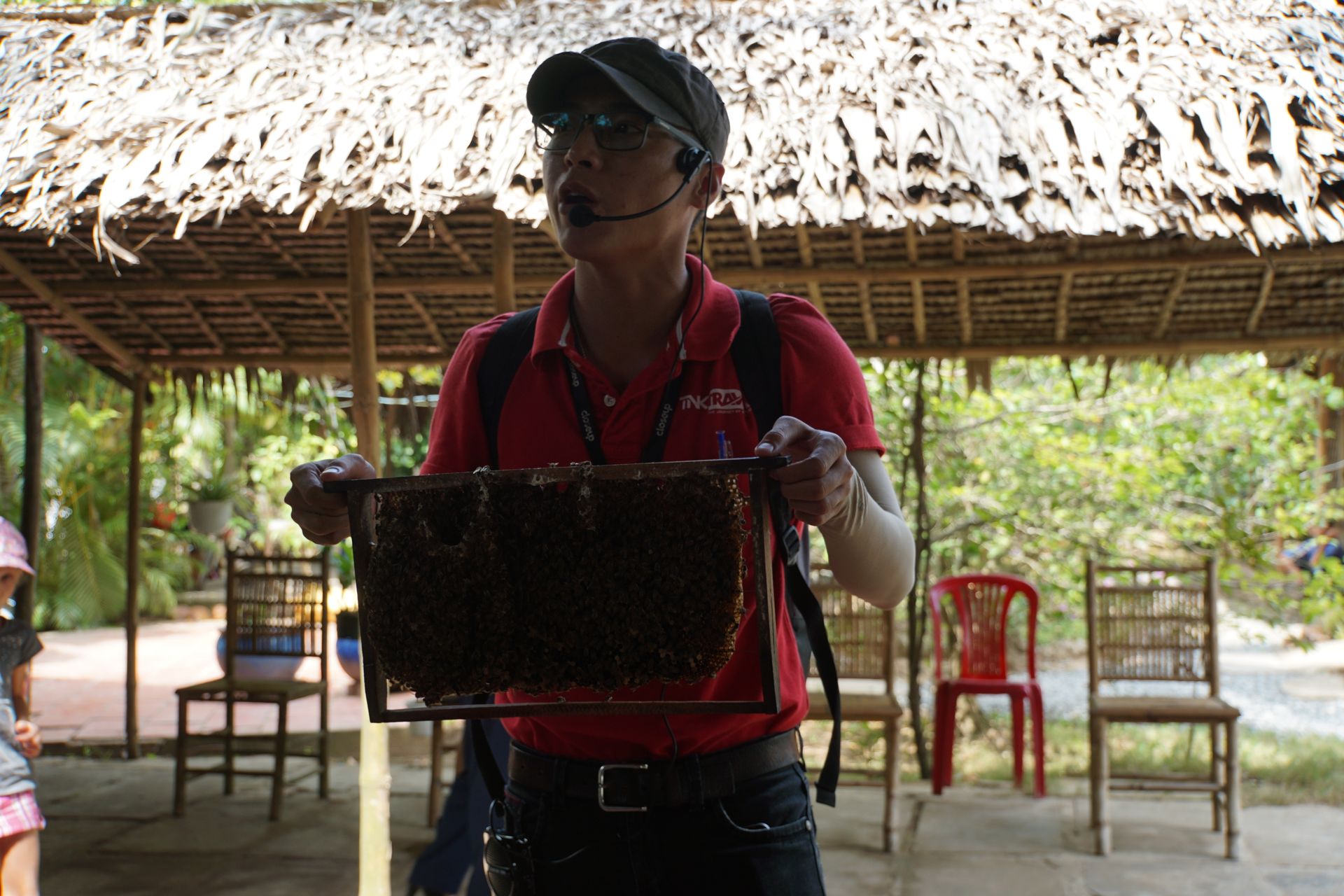
While K explains everything about Vietnamese bees and beekeepers, we enjoy a glass of honey-sweetened tea with kumquat juice. After a little music show, during which we listen to traditional Vietnamese music and singing, we go on the water for the first time. We are rowed in small boats through the canals that distribute the water of the Mekong River to the fields of the local farmers. These canals are lined with the water coconut, which not only strengthens the dams, but also provides plenty of sweet fruit. We are taken to a coconut candy factory (what a nice word). Here K shows us how to peel the coconut correctly, chop and squeeze the flesh, and how the light-white coconut milk becomes thick caramel after a few hours of cooking, which is then packed in rice paper and sold as candy. These candies are delicious and they smell wonderfully like coconut and caramel!
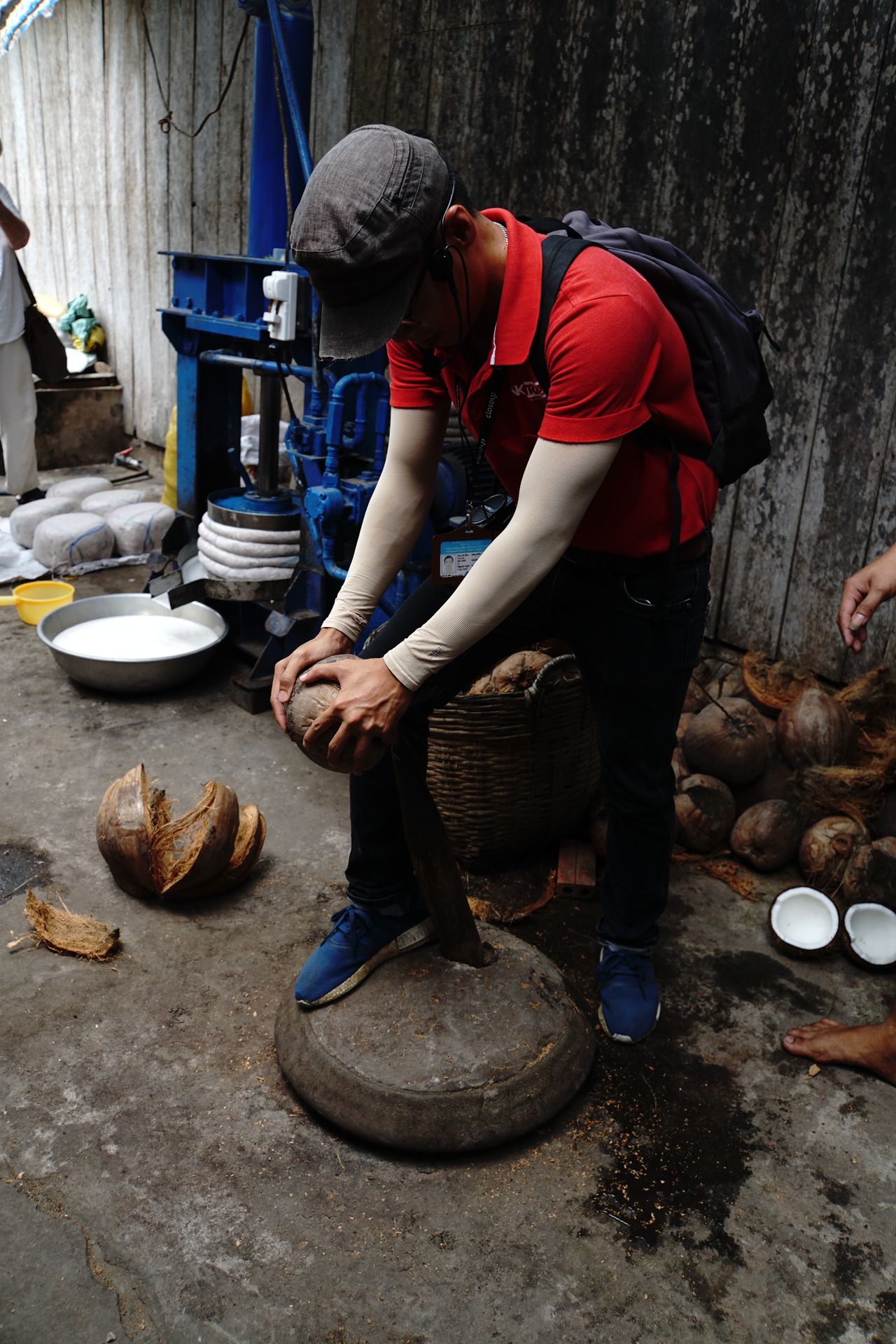
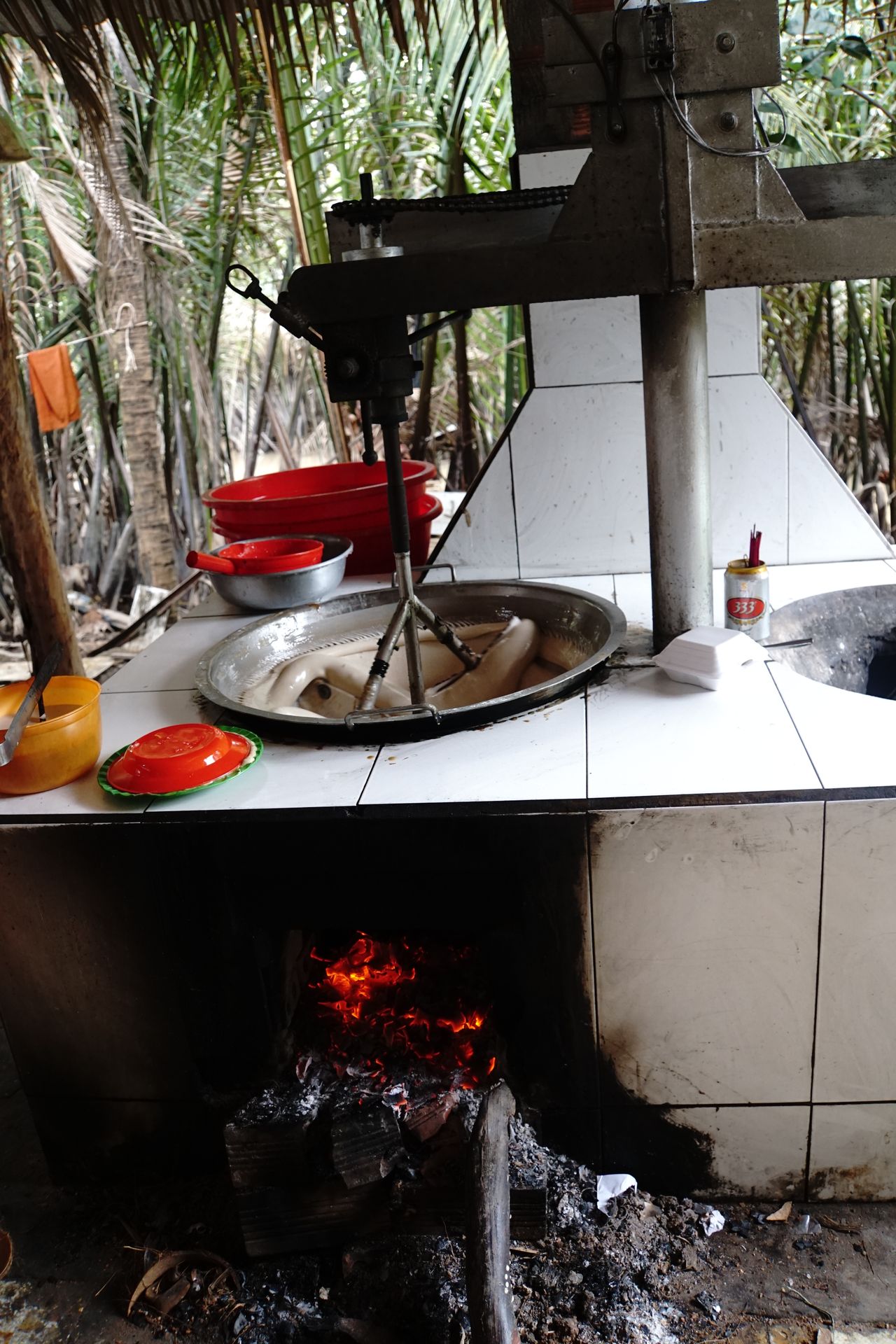
But our personal highlight is the encounter with the in-house python. Even if we feel sorry for it because it is hung around the neck of hundreds of tourists per day, it is an incredible feeling to hold the heavy and muscular animal. K assures us that the 7kg heavy animal is still a young snake, but it can already bite quite strongly!
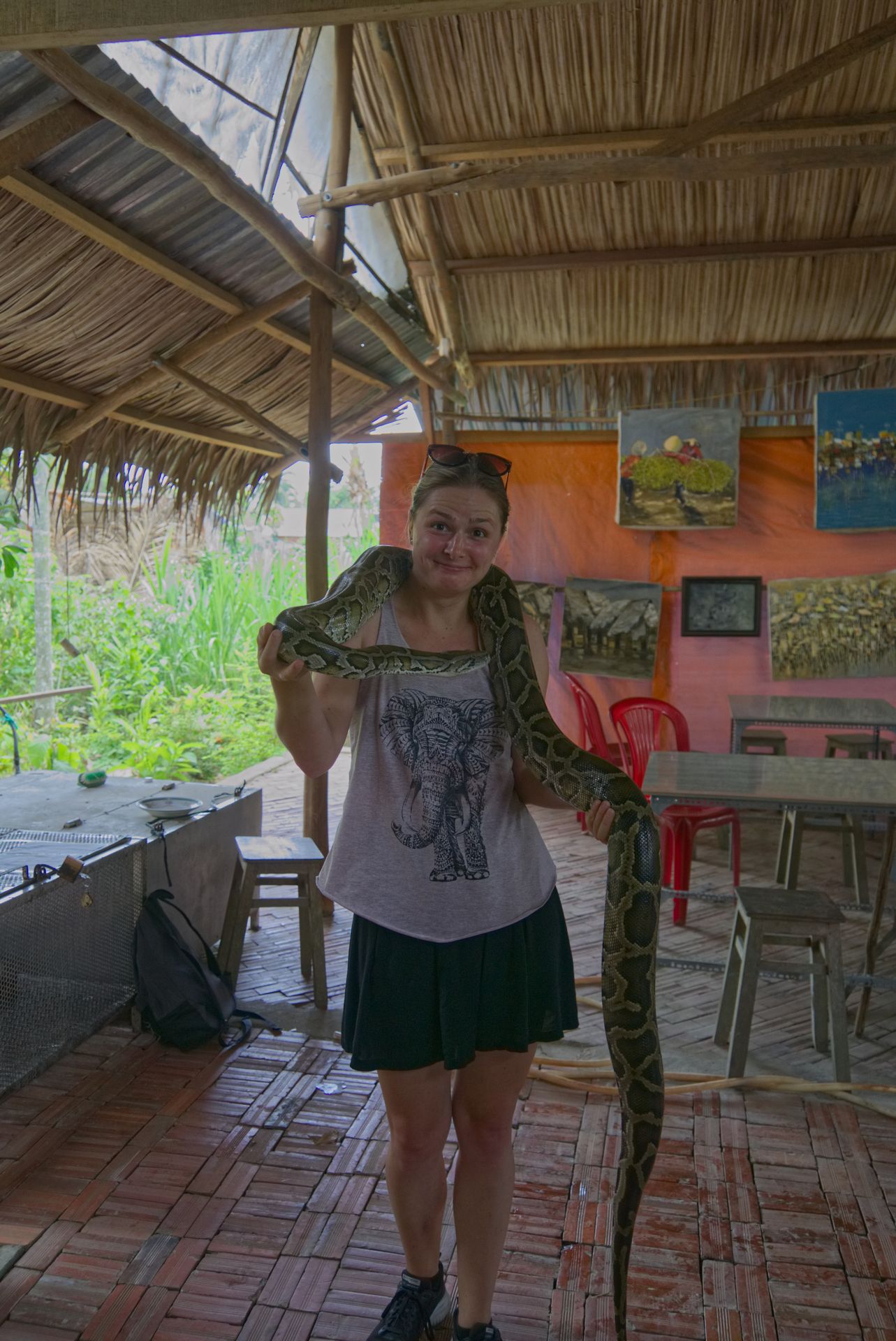
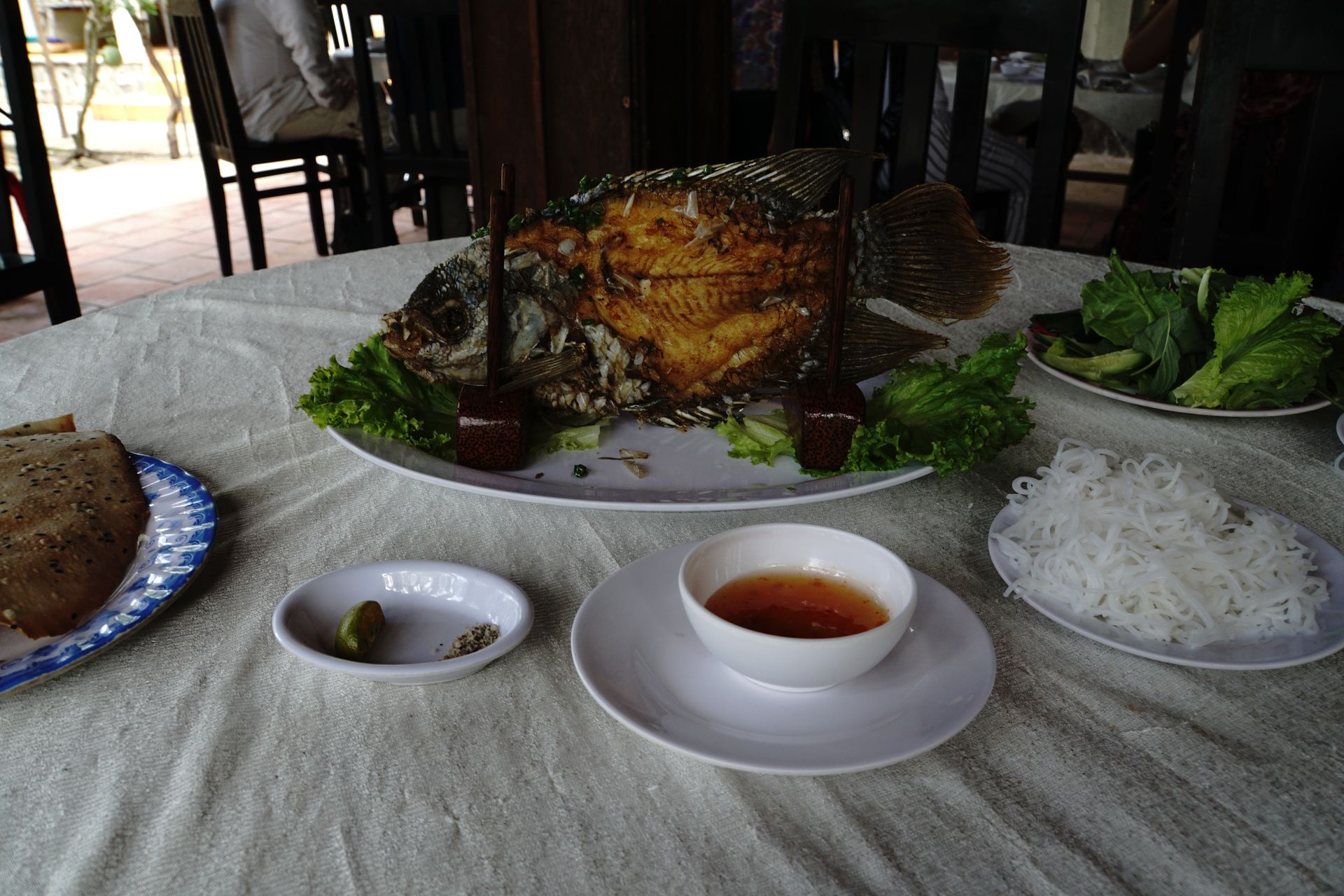
Our last stop for today is at the Vinh Trang Pagoda near My Tho, one of the best-known Buddhist temple complexes in the country. Several huge Buddha statues, sometimes sitting, sometimes lying, sometimes standing, as well as various temples are spread over an area of 2 hectares. The construction of this temple complex lasted from the mid-19th century until the 1930s. The construction lasted so long because on the one hand it was interrupted by French colonization and on the other hand devastating tropical storms repeatedly caused damage to the buildings.
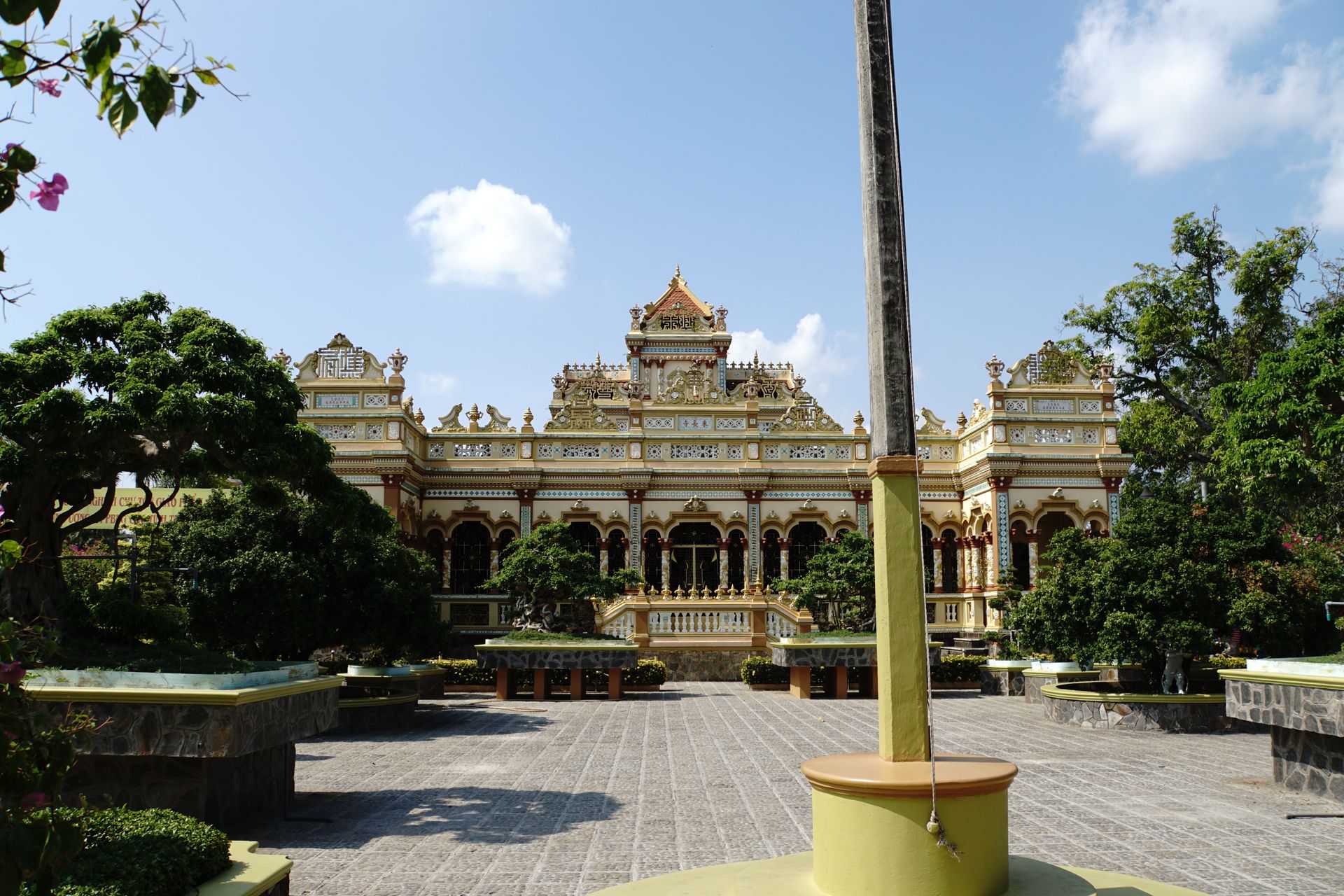
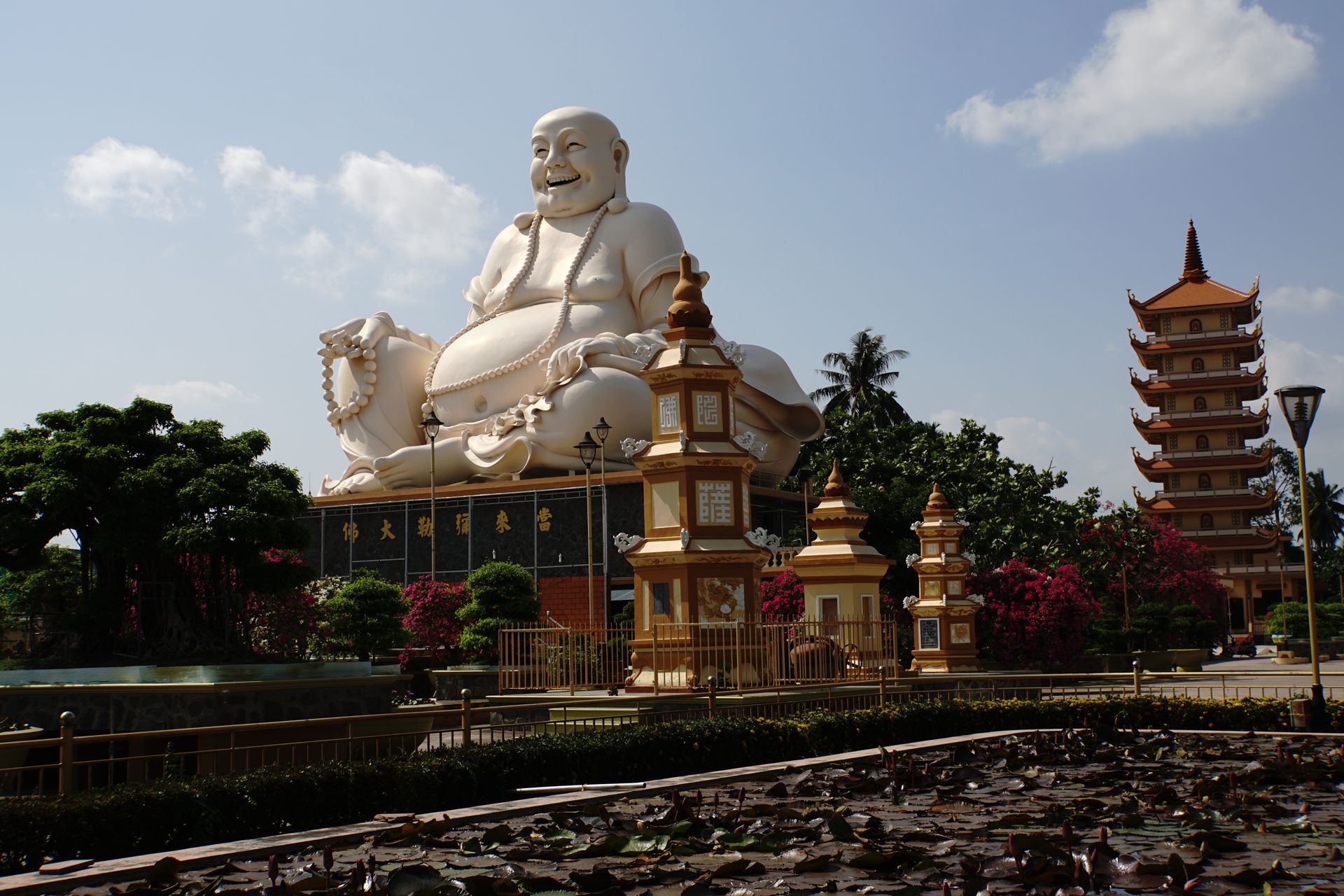
We spend our first night in Can Tho. From here we drive early in the morning (it was supposed to start at 6:30 a.m., but by the time everyone has arrived it is already seven o'clock) by boat to the floating markets, more precisely to the floating market of Can Tho. We haven't even passed through the 'gate' to the market yet when our tourist boat is already boarded by the first eager sellers. And I mean that literally. With grappling hooks and ropes, the small boat docks to ours and offers us coffee and cold drinks as well as fresh coconuts. Even though breakfast was not long ago, we don't want to miss a fresh Vietnamese iced coffee on the river. And contrary to all expectations, this delicacy is by far the cheapest coffee we have ever tasted. For only 10,000 Vietnamese Dong (equivalent to 0.38€) we slurp our ice-cold coffee with sweetened condensed milk.
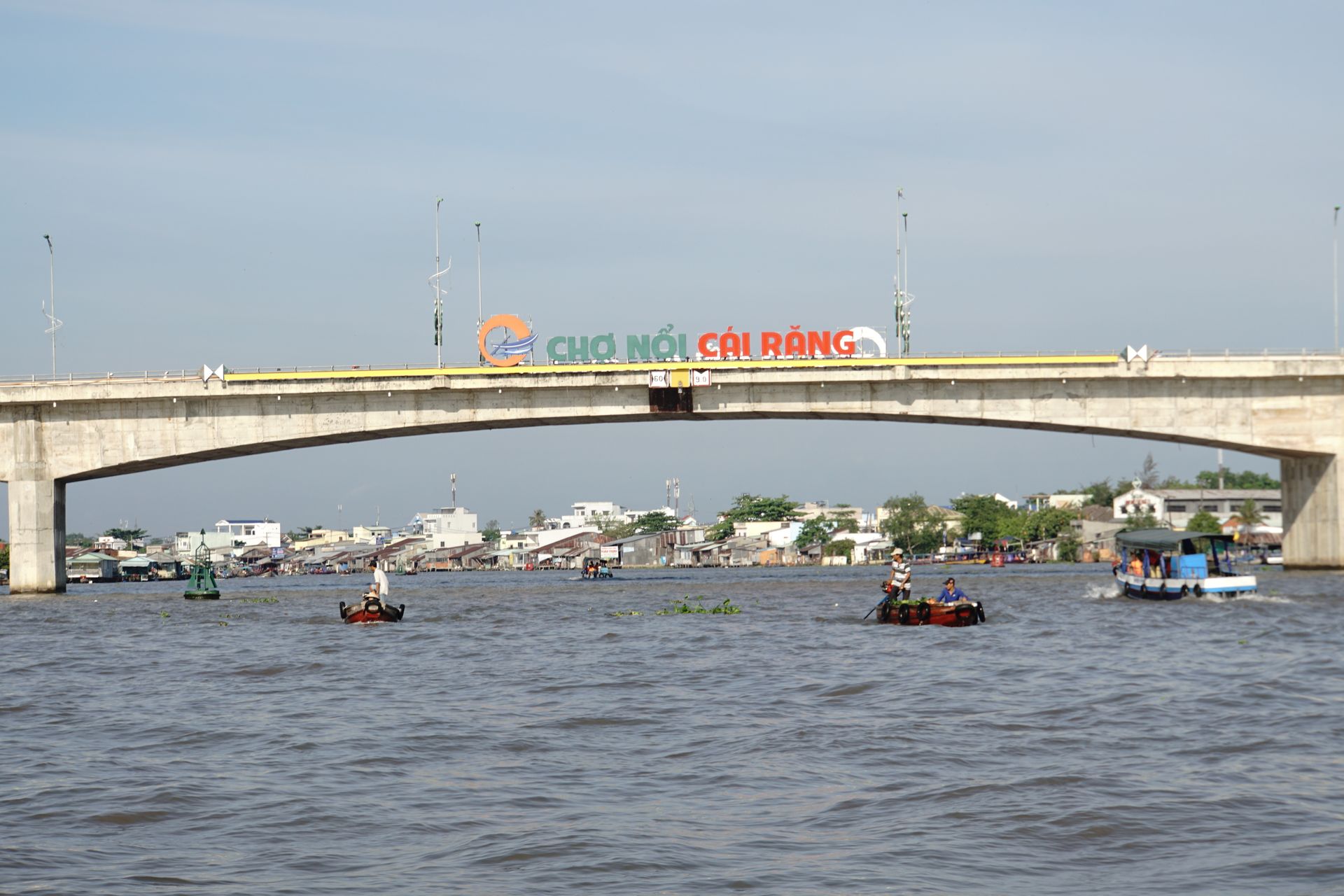
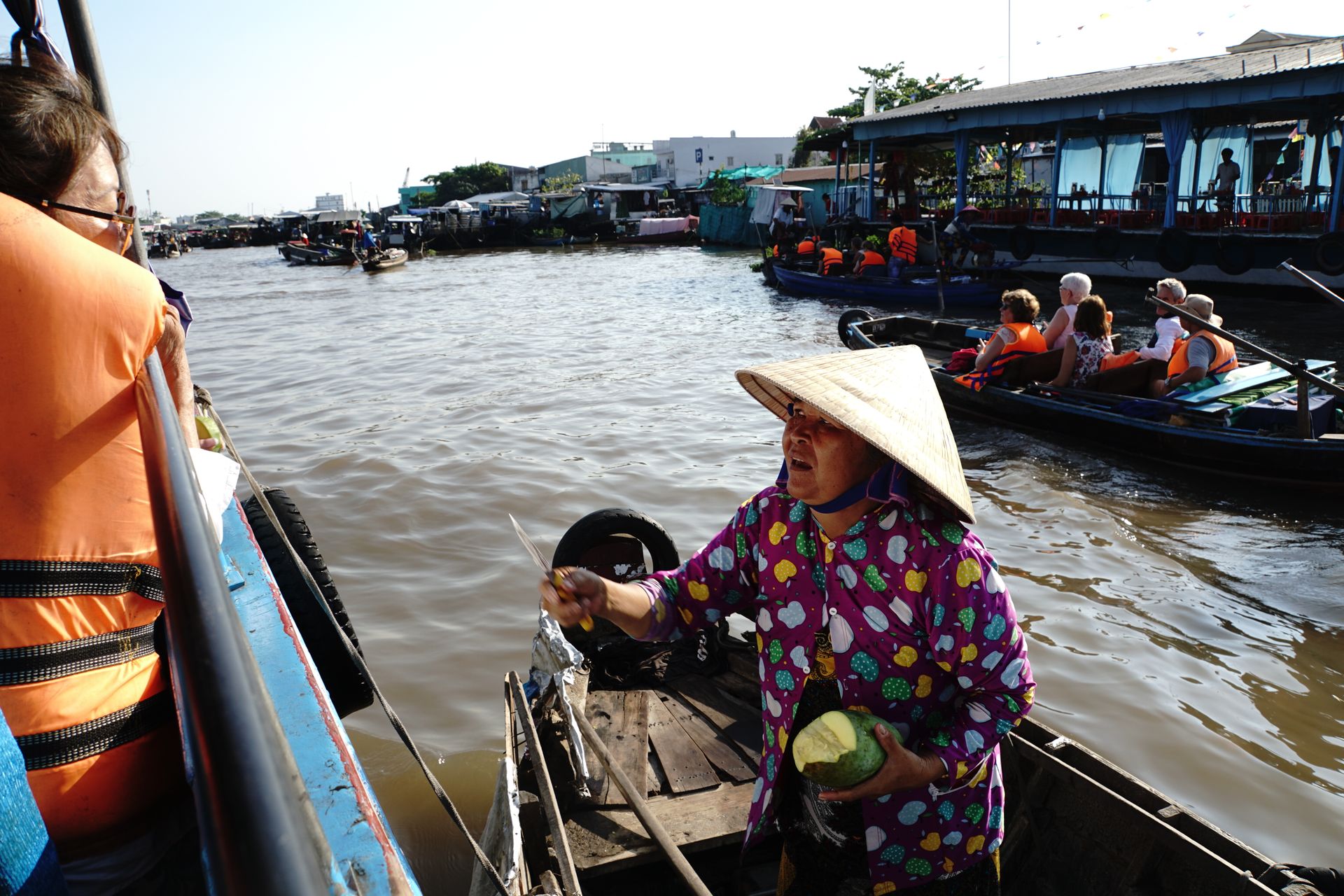
And then suddenly this famous market is next to our boat. About 100 boats, loaded with sweet potatoes, pineapples, rice, melons and pumpkins, herbs and salads, wood and coal, float in the middle of the river. The boats are densely packed. The goods to be sold are hung on a wooden stick attached to the front of each ship. This way, customers can see from a distance which goods are being offered. There are fewer customers than we expected. However, it is already almost eight o'clock and the loaded boats of the sellers appear here at 4 o'clock. They stay at anchor until they have sold everything or decide to sell the rest to dealers on the mainland for little money. They are making a loss with this, as the prices on the river are already very low (lower than at the market on land).
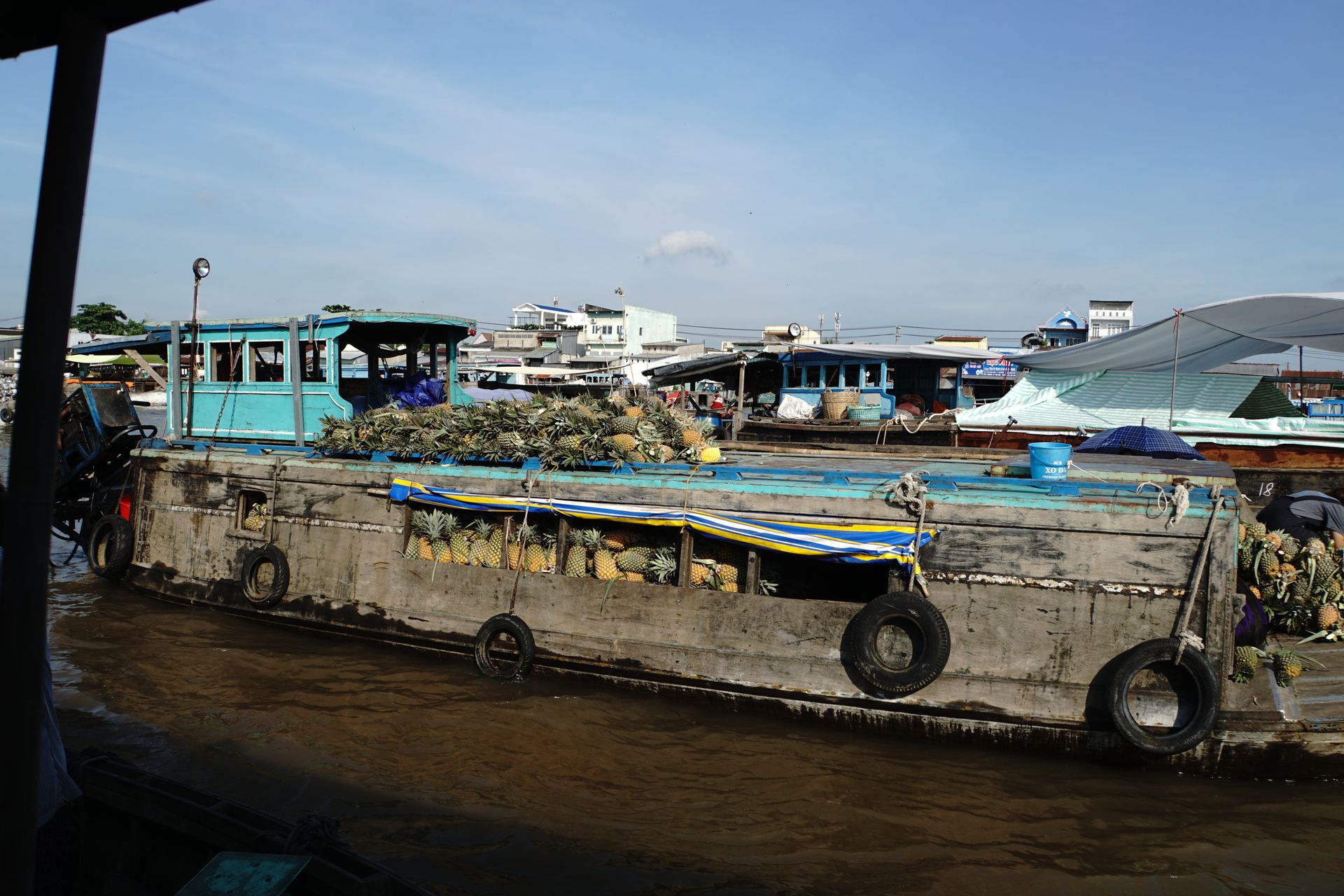
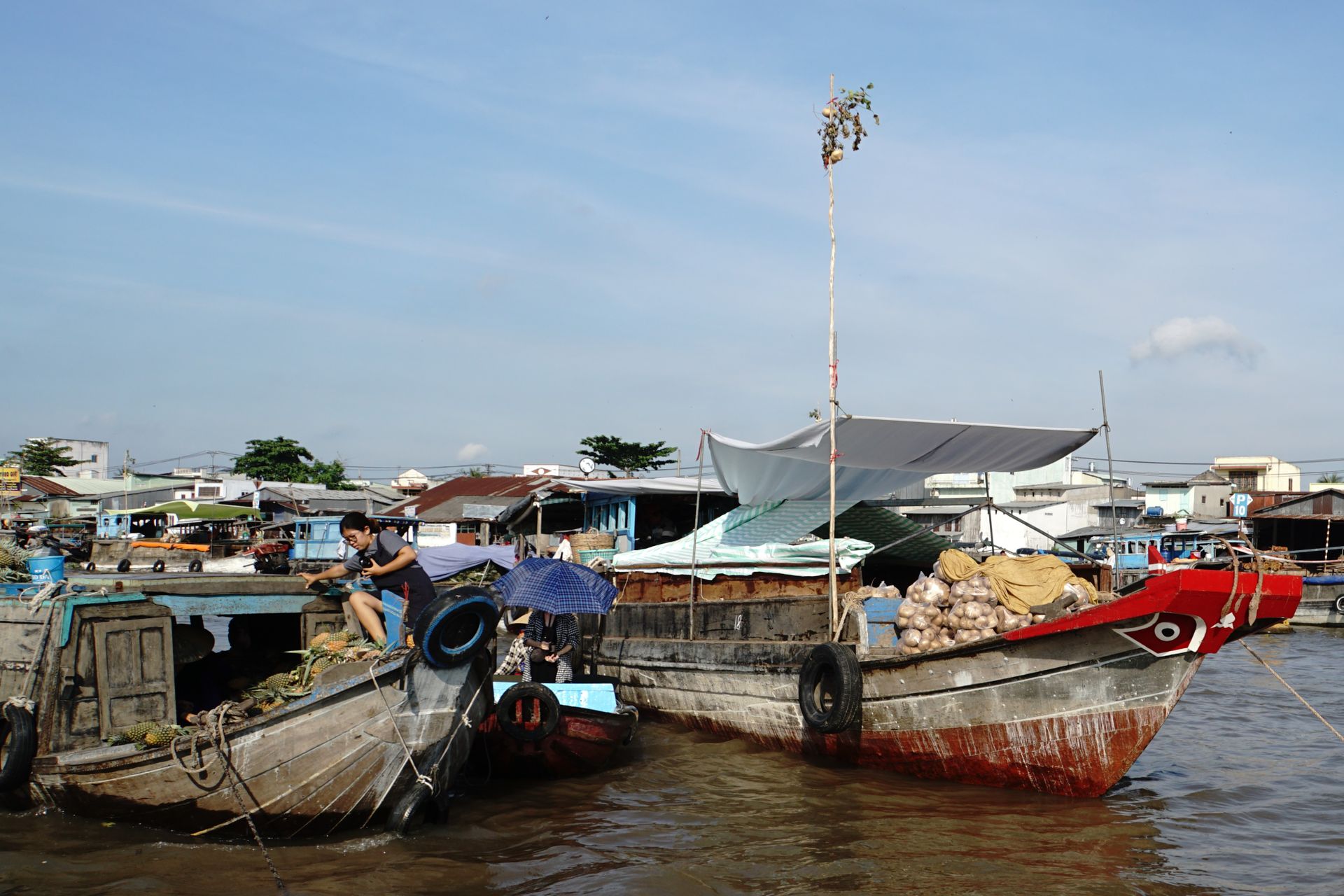
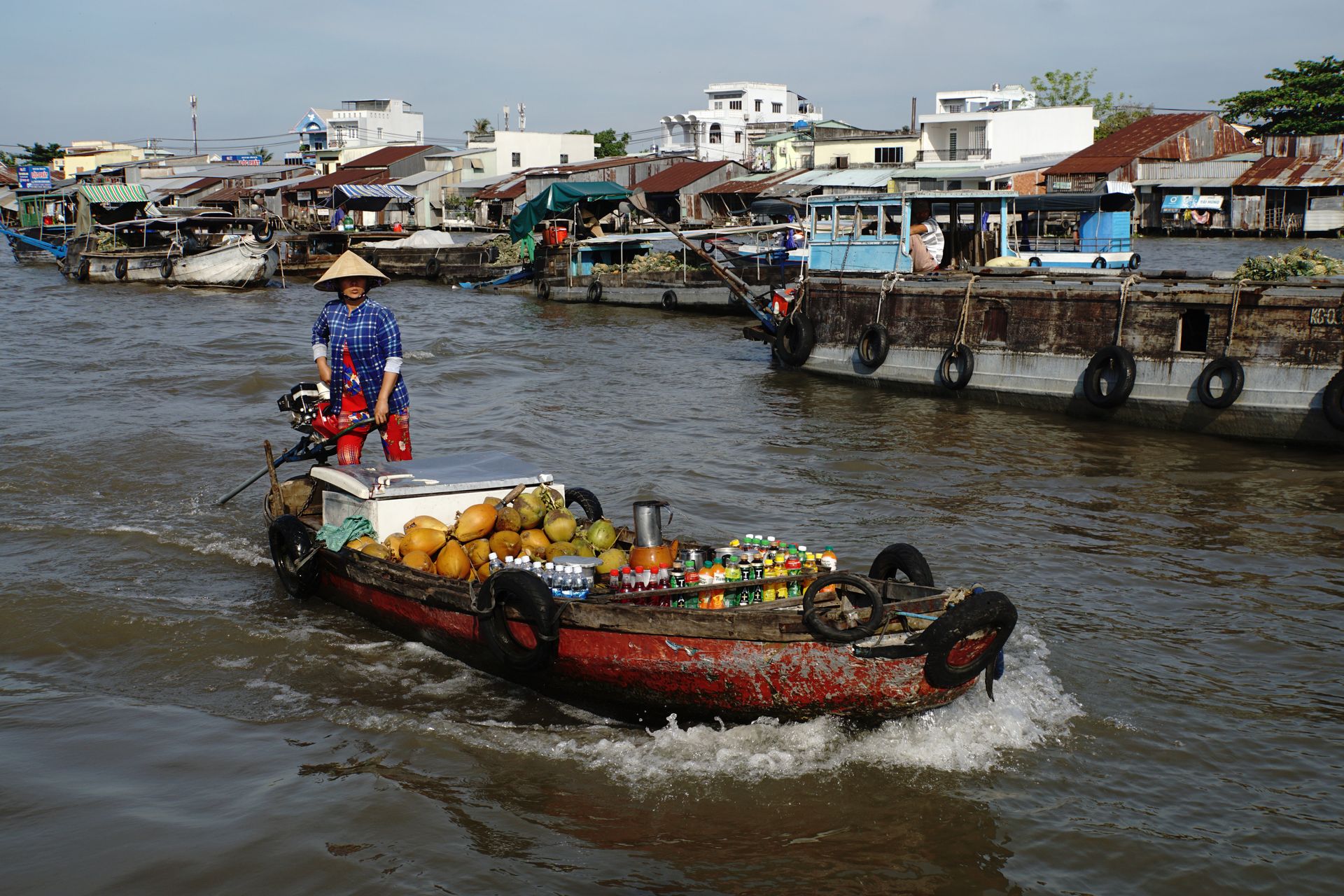
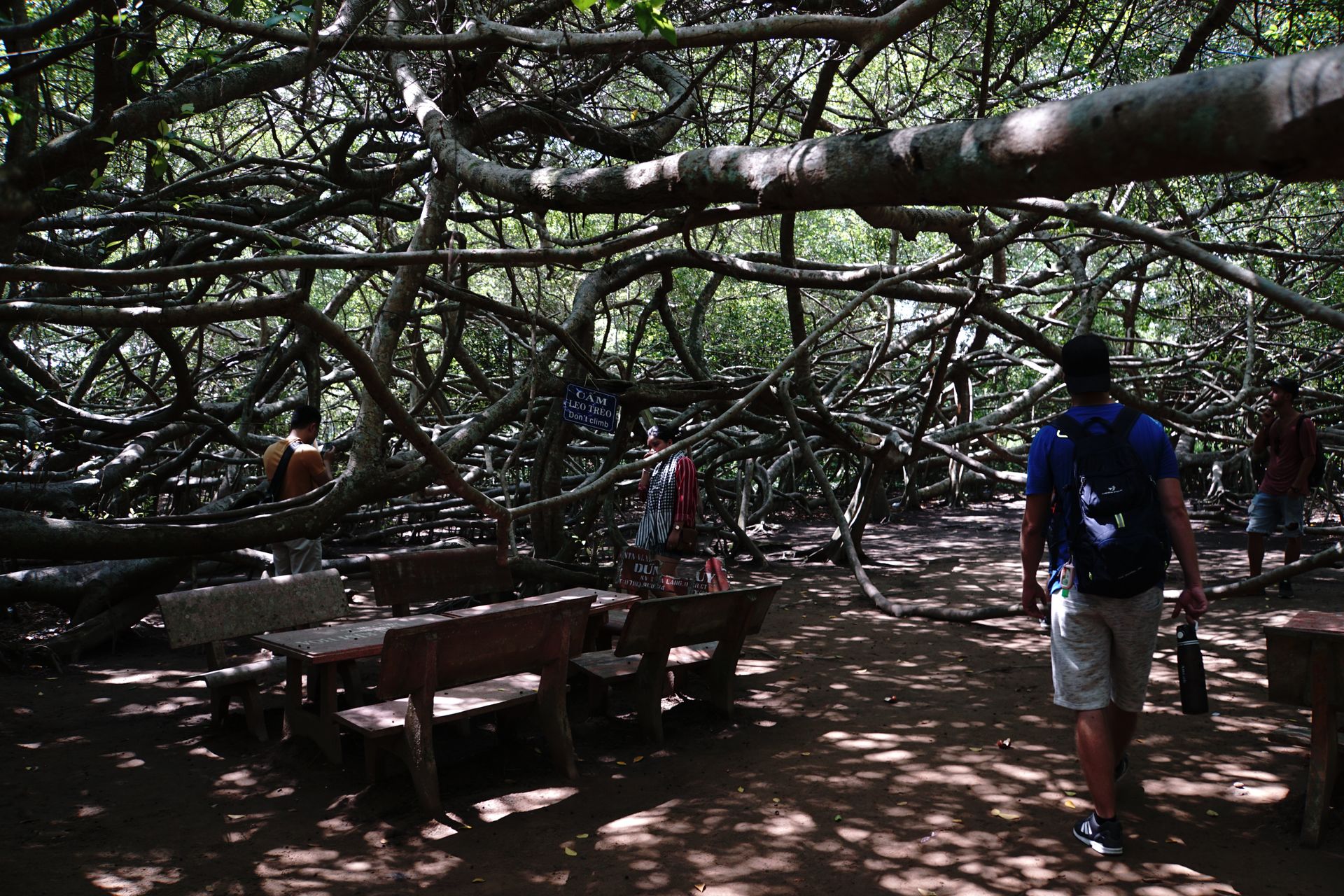

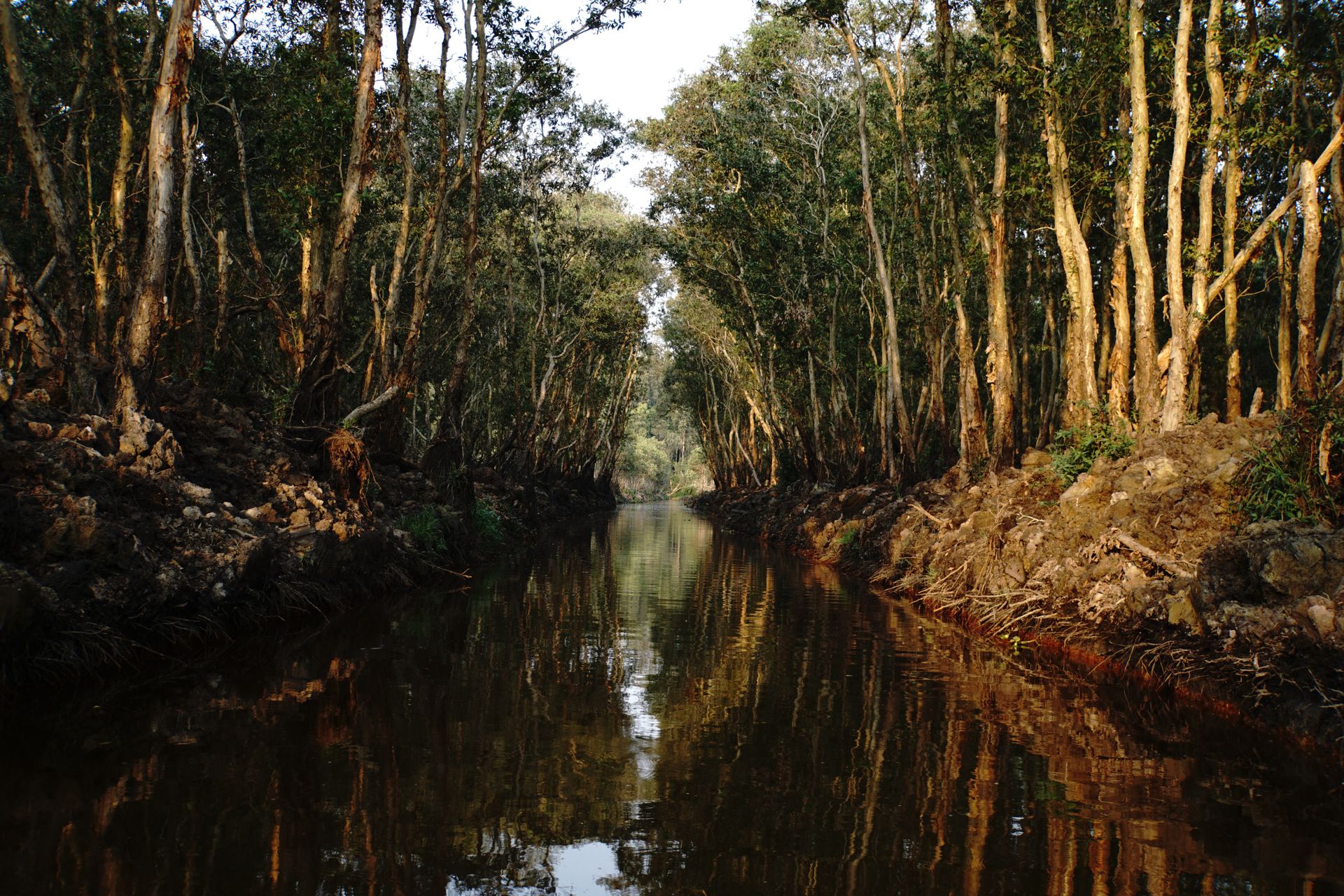
Arriving in Chau Doc, it has already become evening and we go to eat something. Thanks to K's tip, gradually many others from our travel group also arrive at the restaurant of our choice. Chantal and Adam from Australia join us and we spend a pleasant evening together.
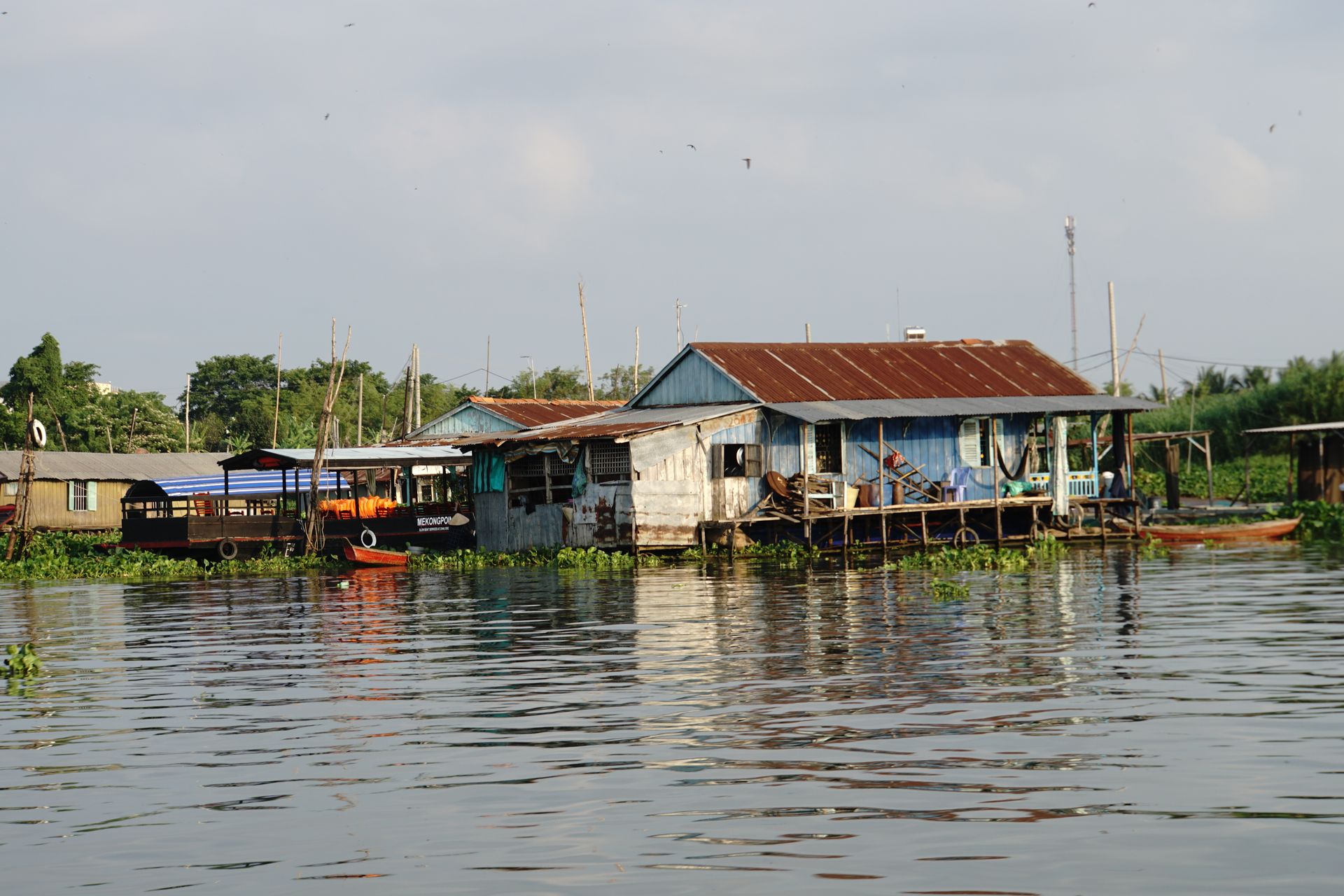
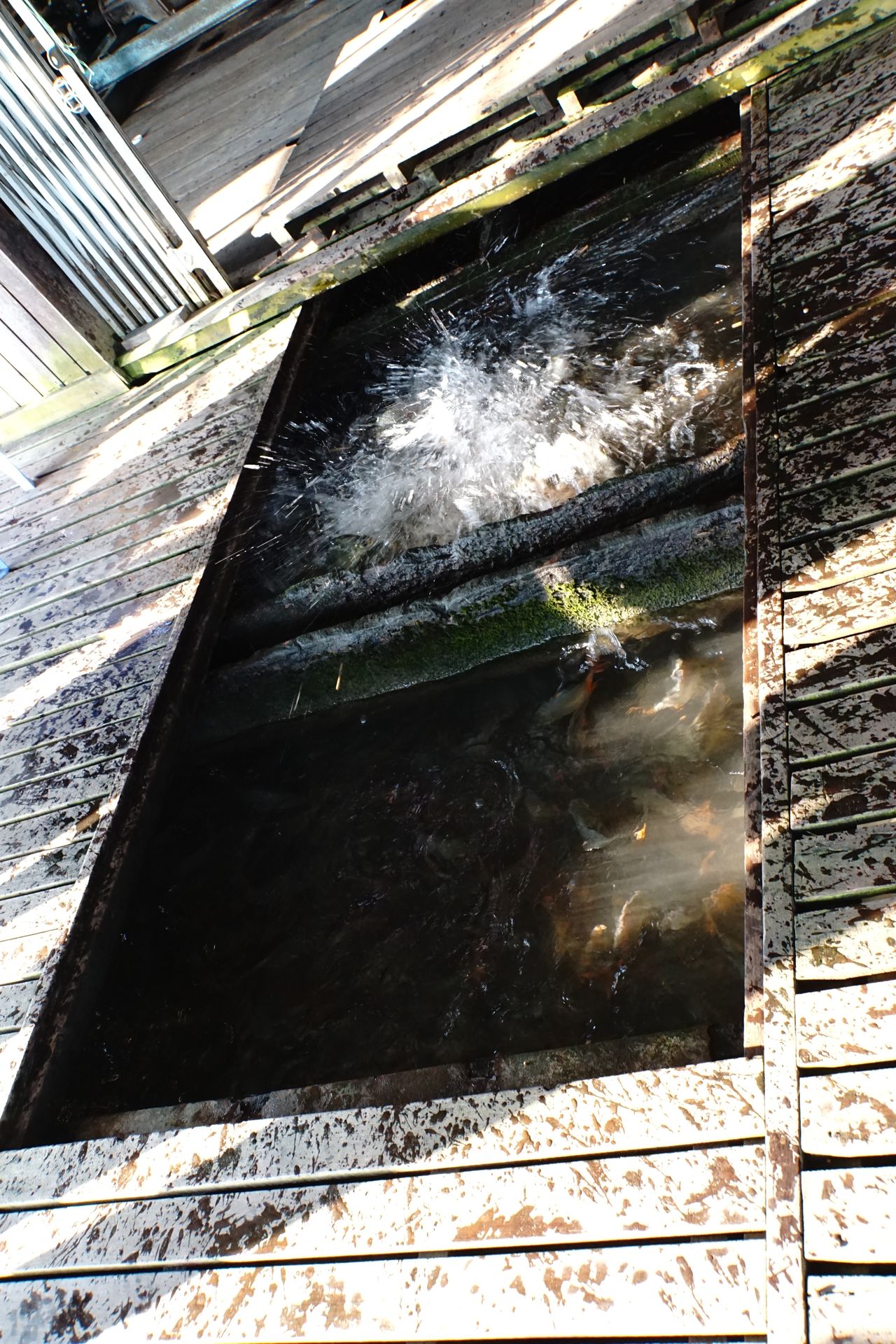
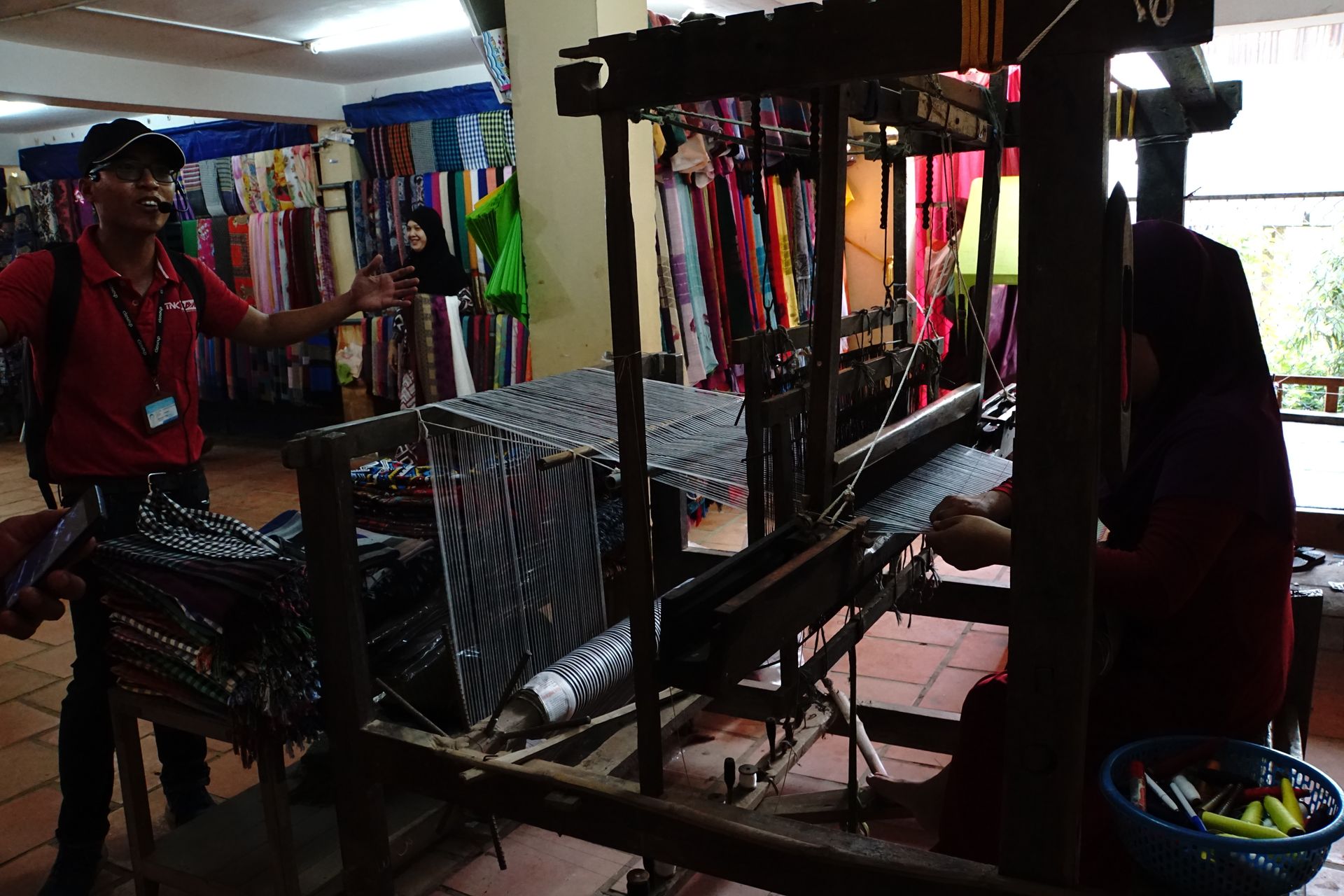
Then it suddenly becomes a bit hectic, because the speedboat that is supposed to take us across the Cambodian border to Phnom Penh is already waiting for us. So we go straight back on the water without any detours and after a few words of thanks to K, who has told us a lot and explained things to us in the last two days. A crew member of the boat collects our passports, a passport photo, the immigration papers we filled out, and the required money for the visa on arrival in Cambodia (30 USD for the visa and 5 USD for the collecting fee - of course). When leaving Vietnam, we have to get off the boat for a moment, but here we can still enjoy a coffee and change money in a relaxed manner while the crew member takes care of our exit stamps. 10 minutes boat ride later, we get off the Cambodian border crossing in the middle of the river and wait for our passports. We have really never had such a relaxed entry. After a passport and person control, we go back on the boat and directly to Phnom Penh, the capital of Cambodia.
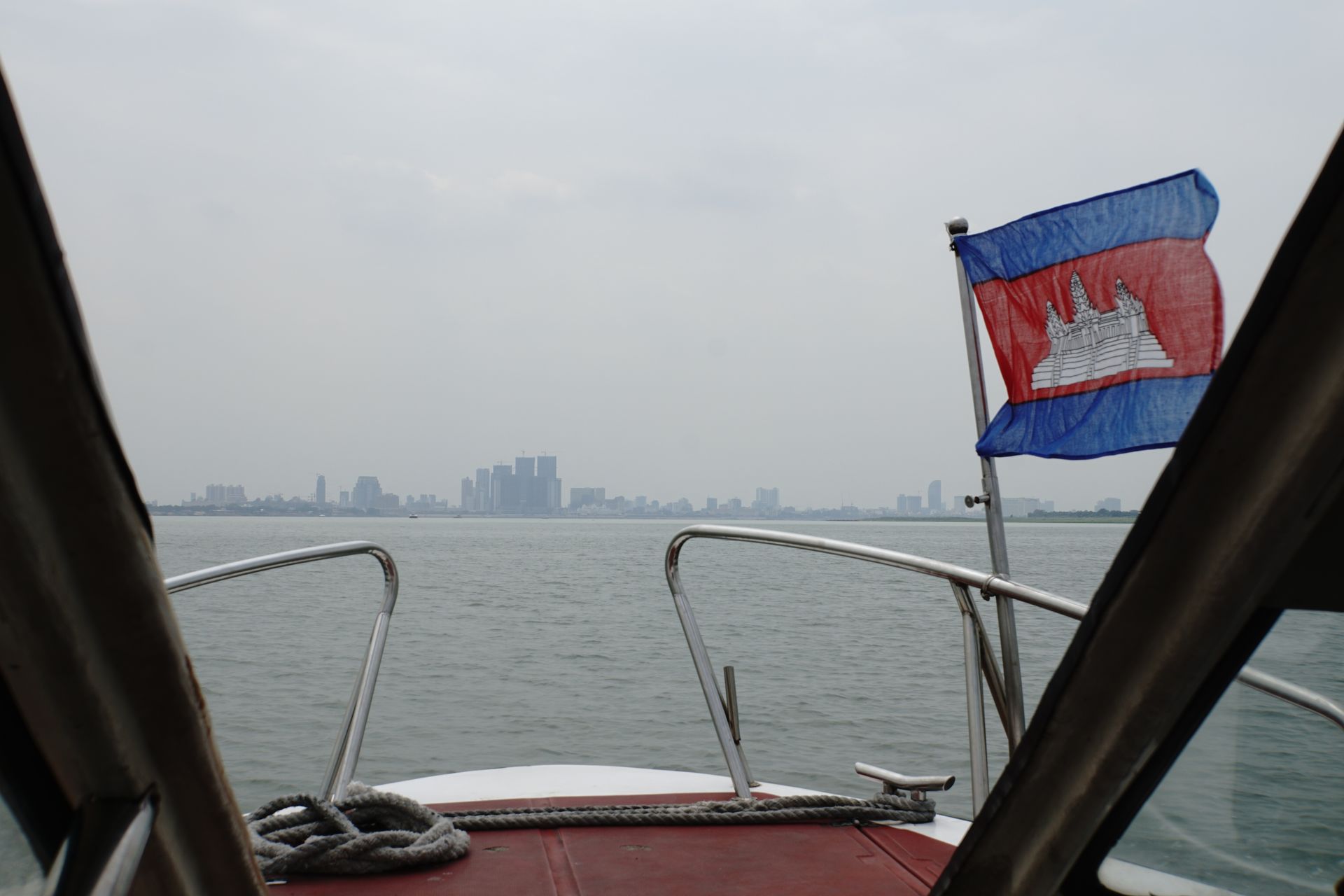
After taking care of our trip to Siem Reap the next morning, we enjoy a burger at the restaurant around the corner and let the evening come to a leisurely end. The tour through the Mekong Delta was very exhausting, even though we didn't have to worry about anything. We didn't expect so much program and were very positively surprised by TNK Travel. Even though we are not usually group travelers, we are sure that we couldn't have done better on our own in such a short time. So we saw an incredible amount, from fruit plantations, candy factories, floating markets, bird sanctuaries, and fish breeding under the floating houses. Besides, our arrival and entry into Cambodia were really relaxed and uncomplicated. It was definitely worth it for us!
Subscríbete ao Newsletter
Resposta
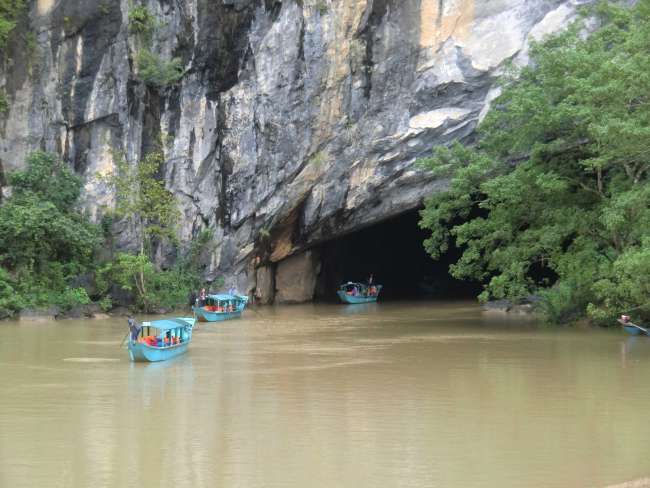
Informes de viaxes Vietnam
